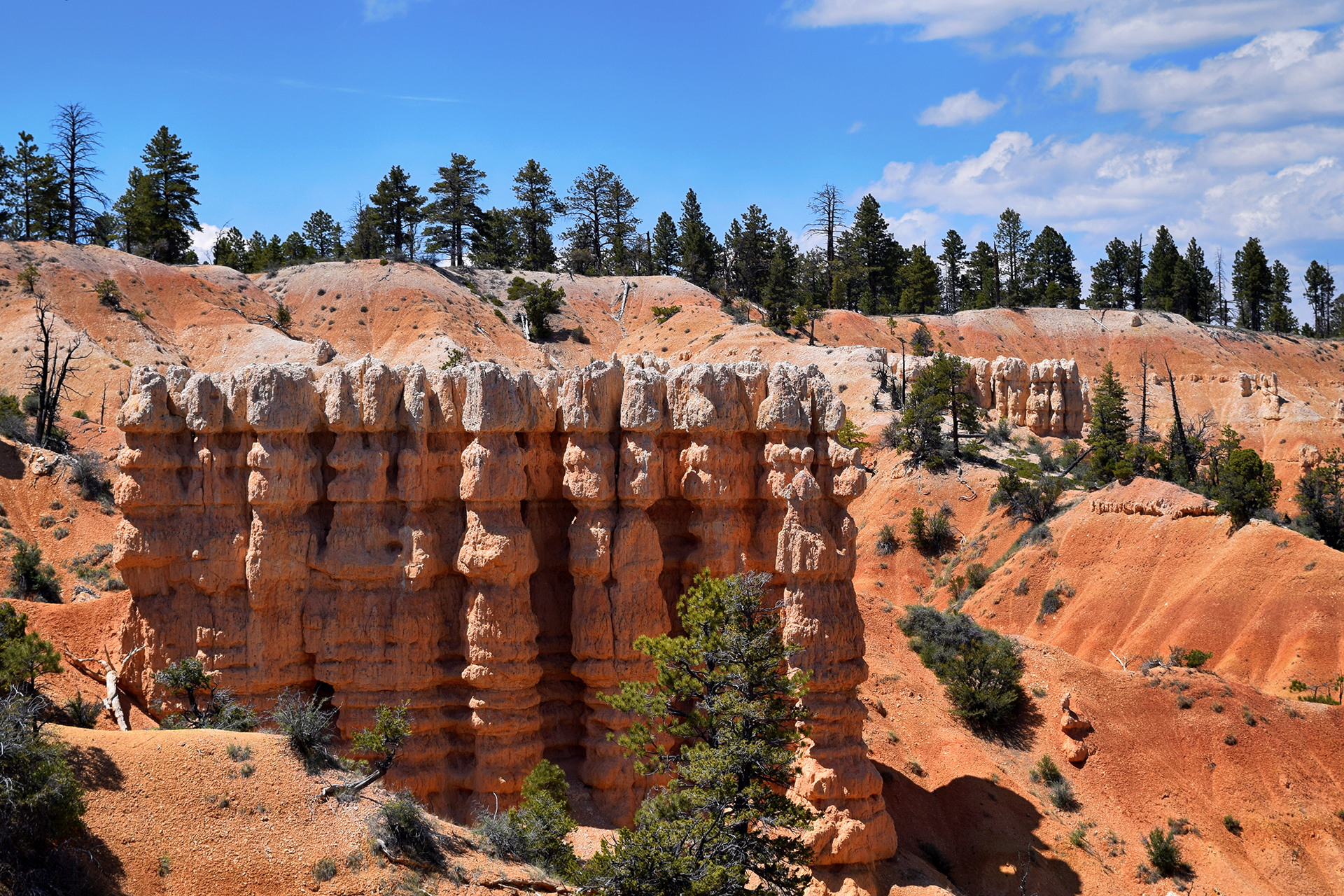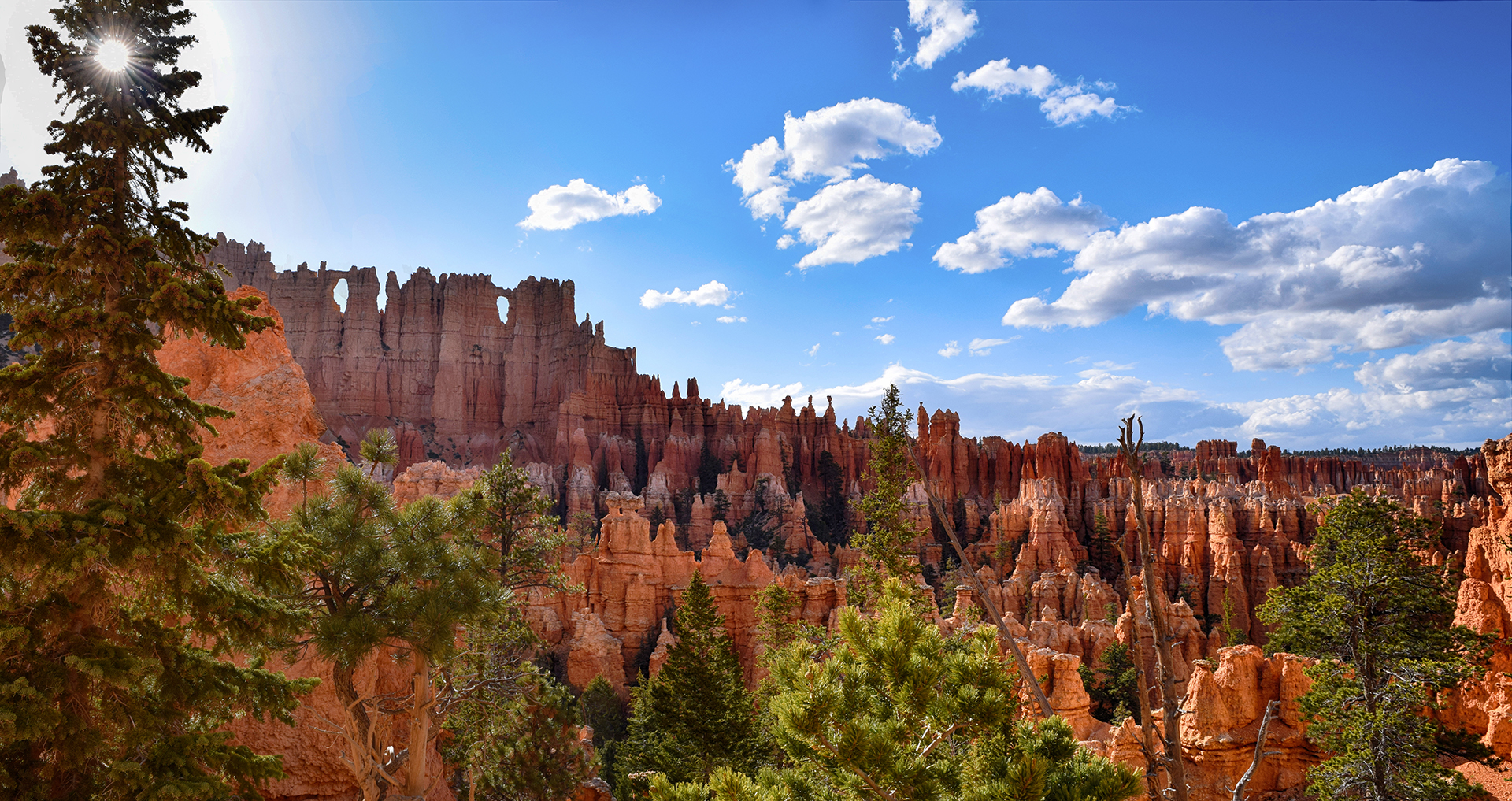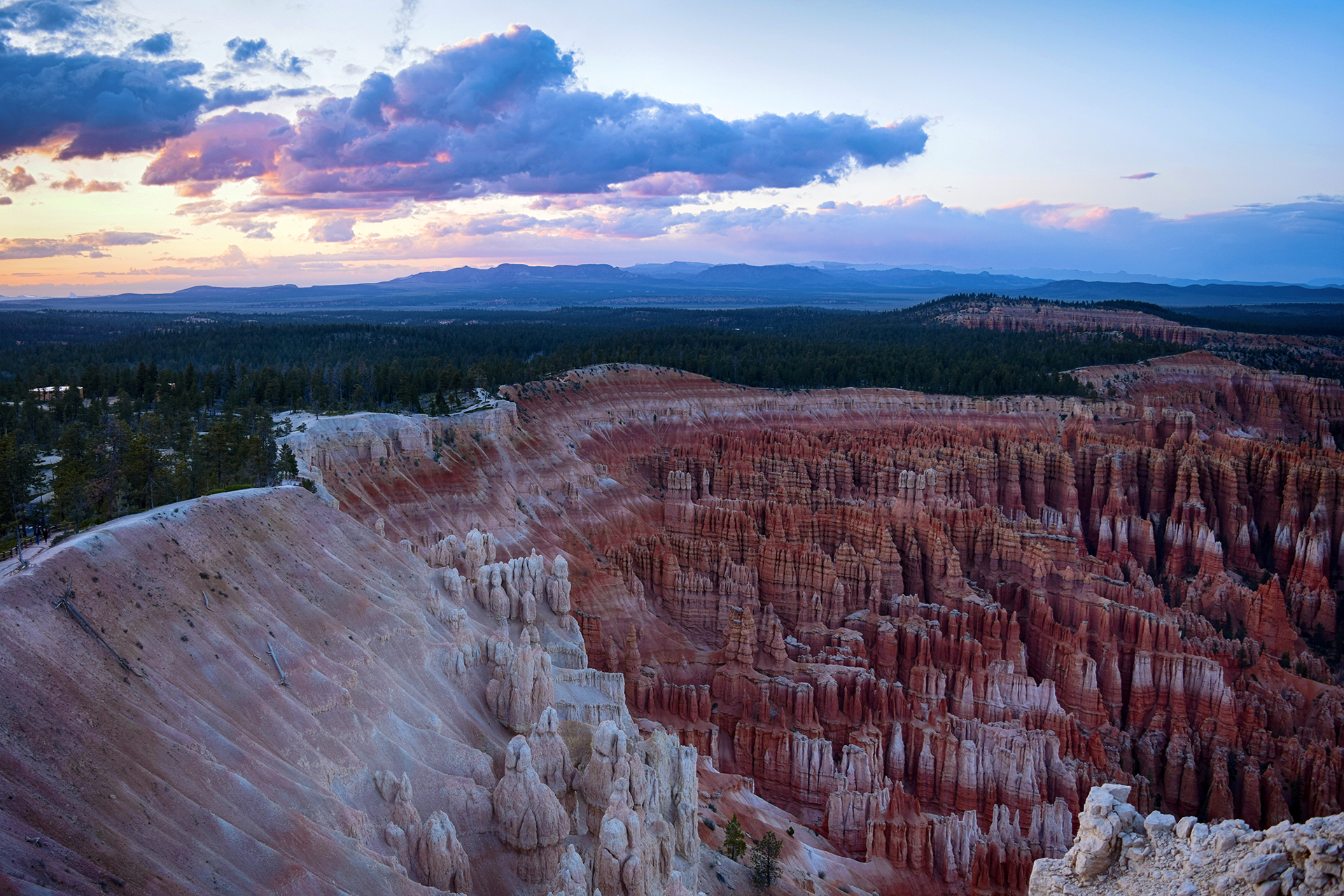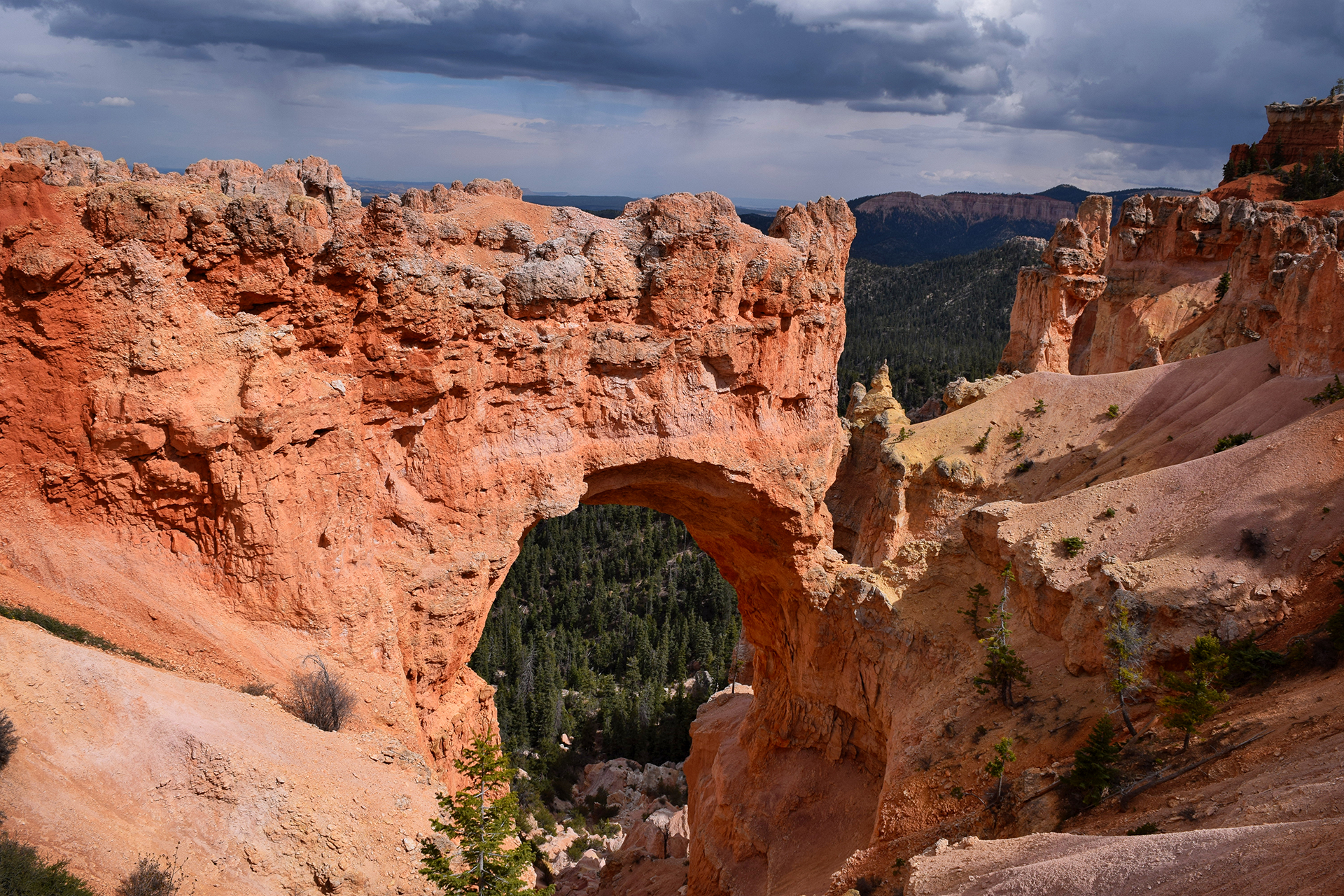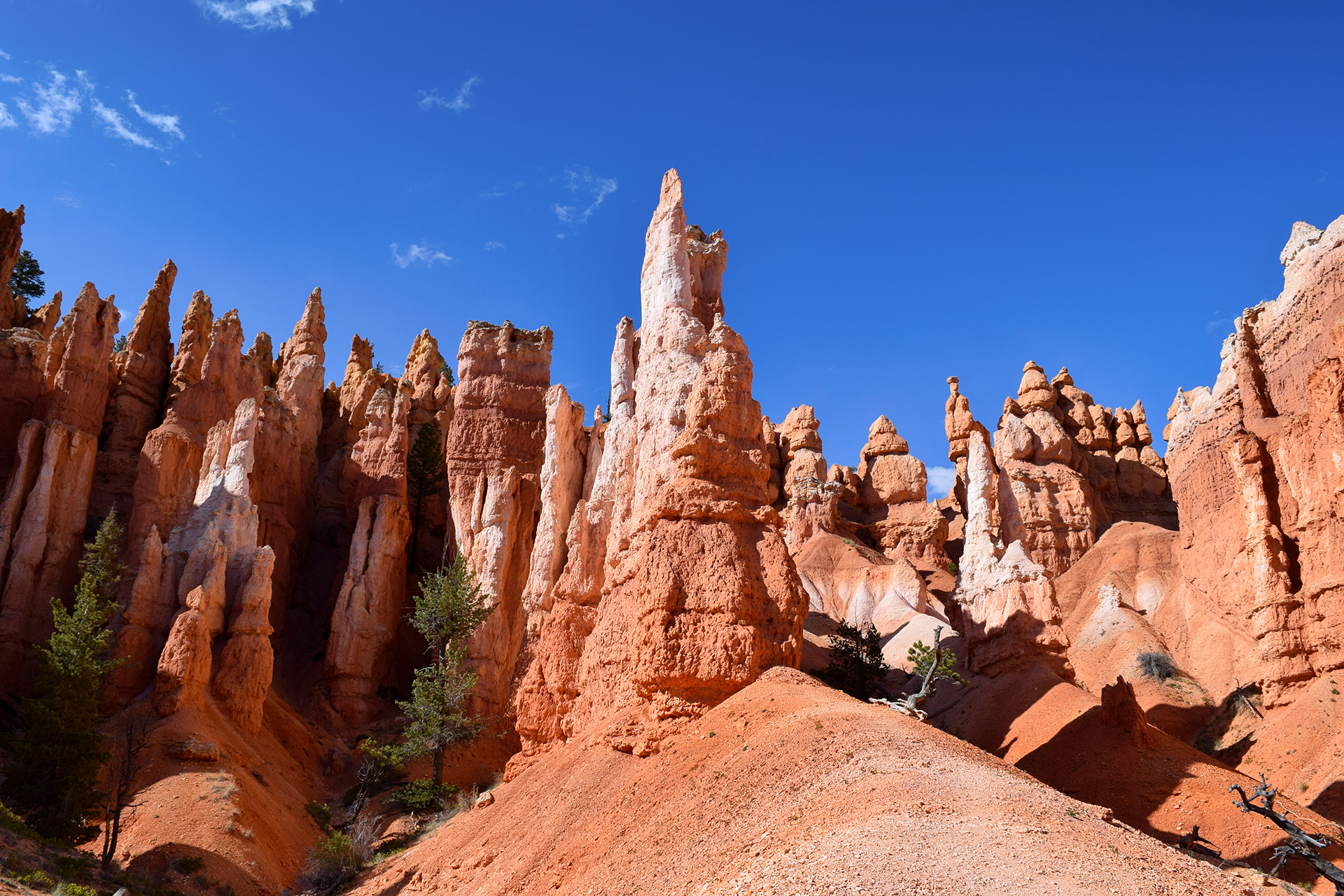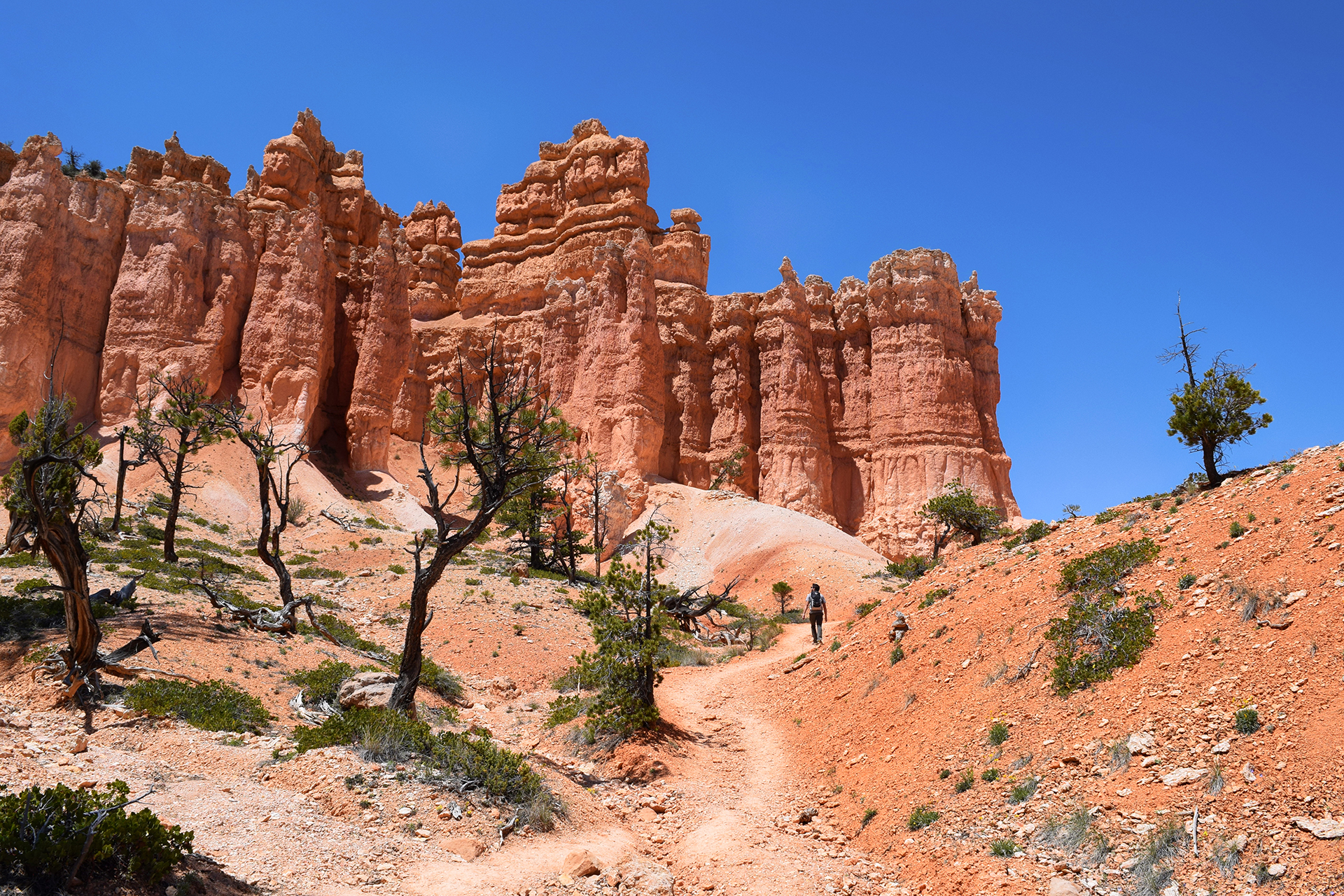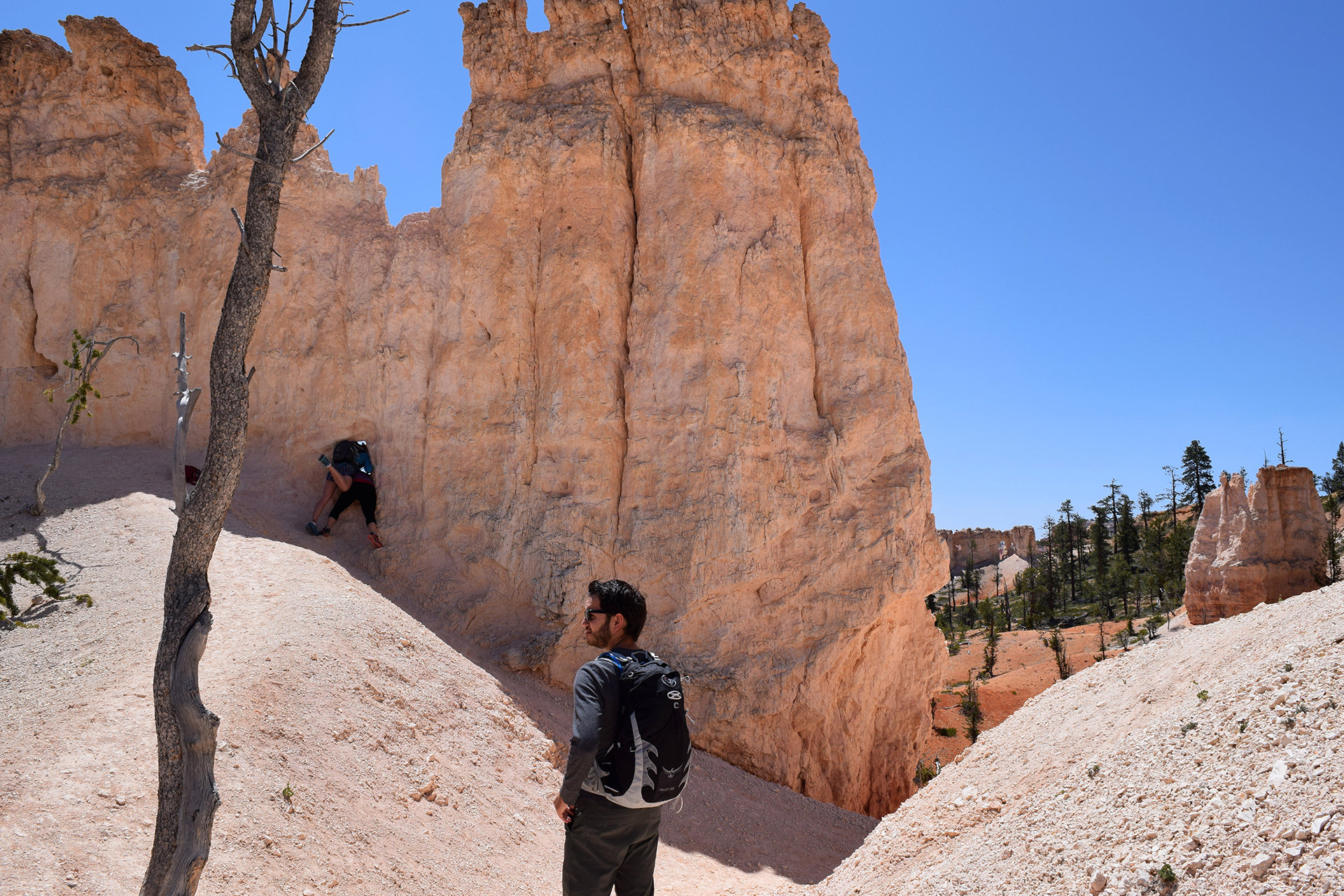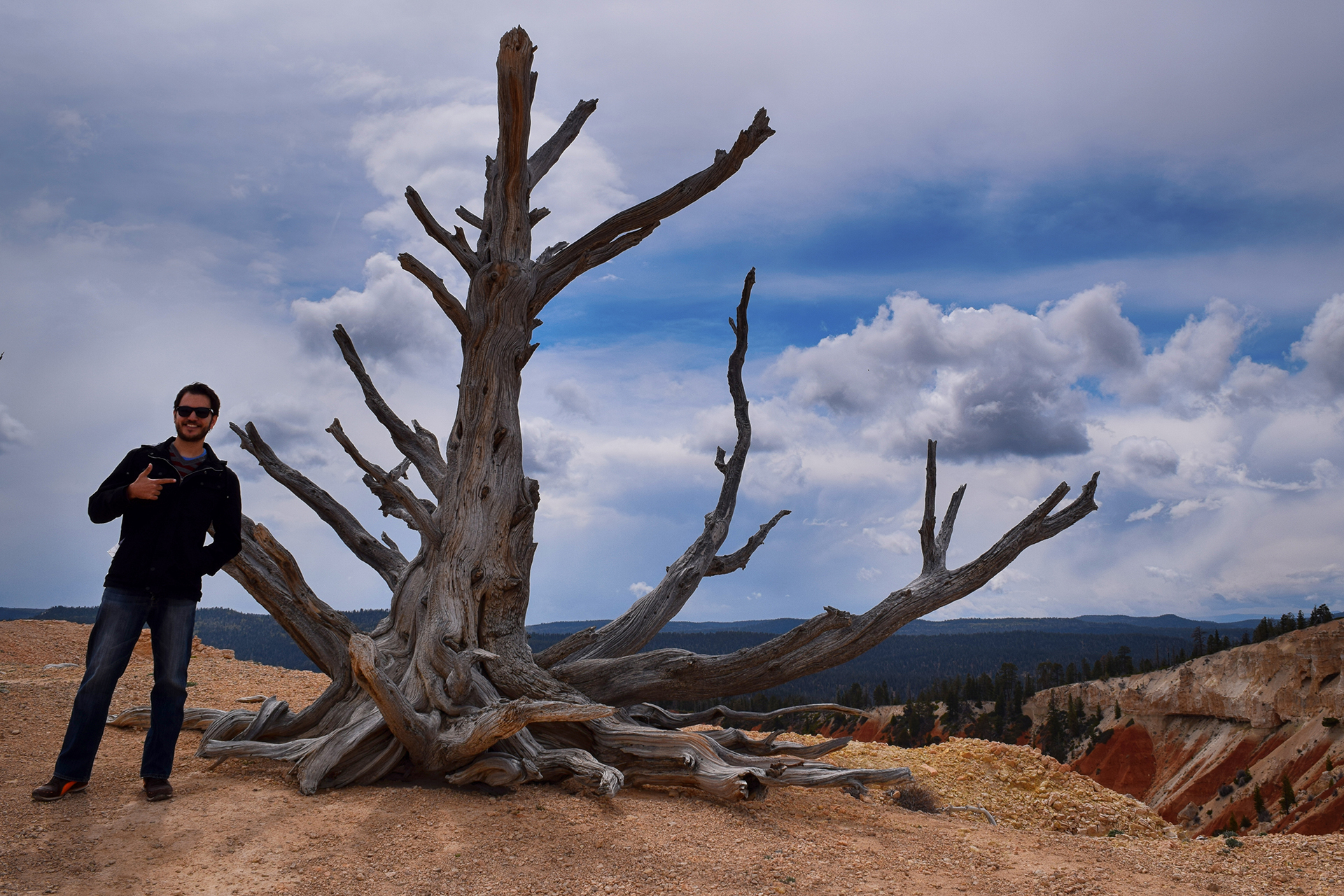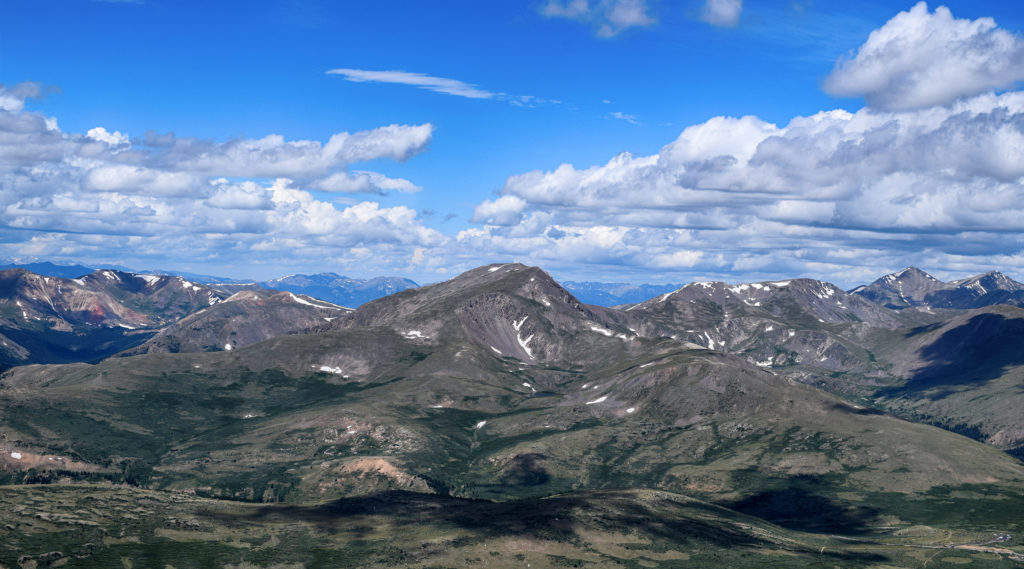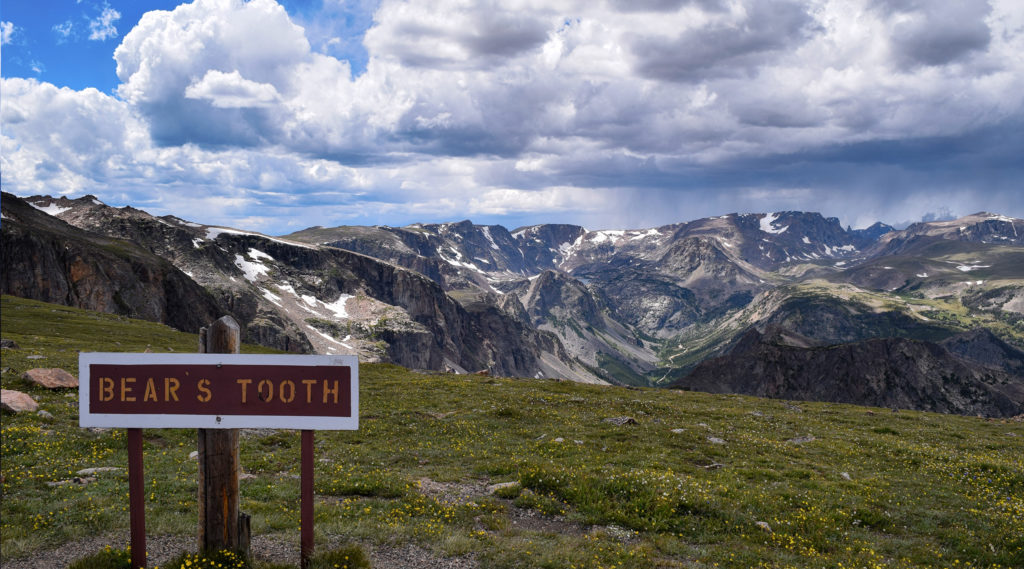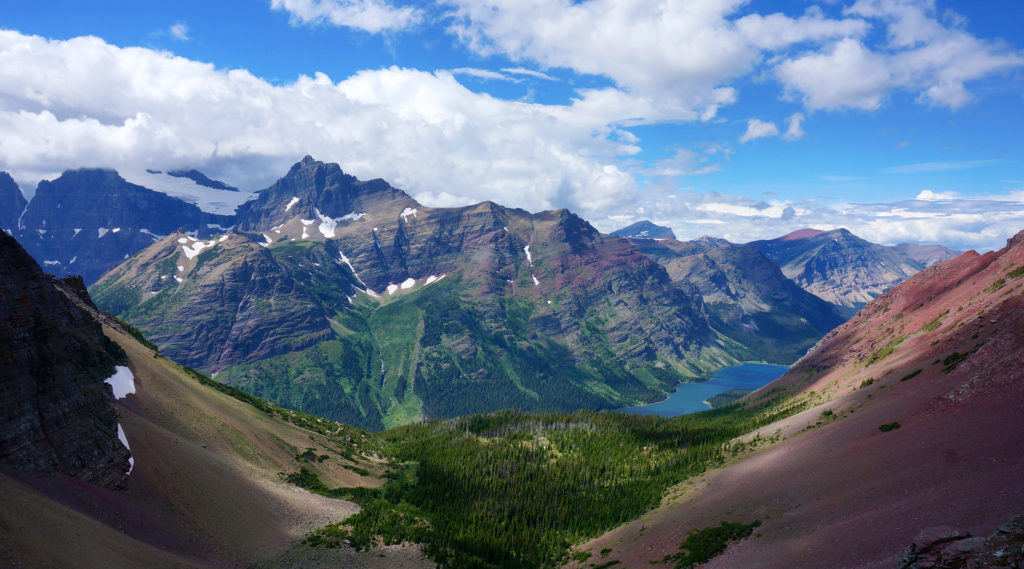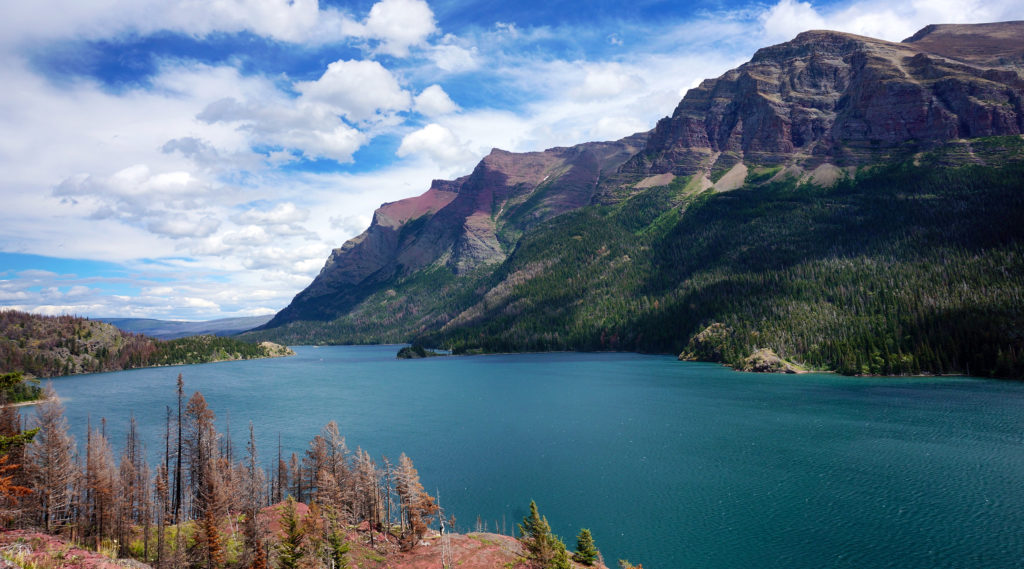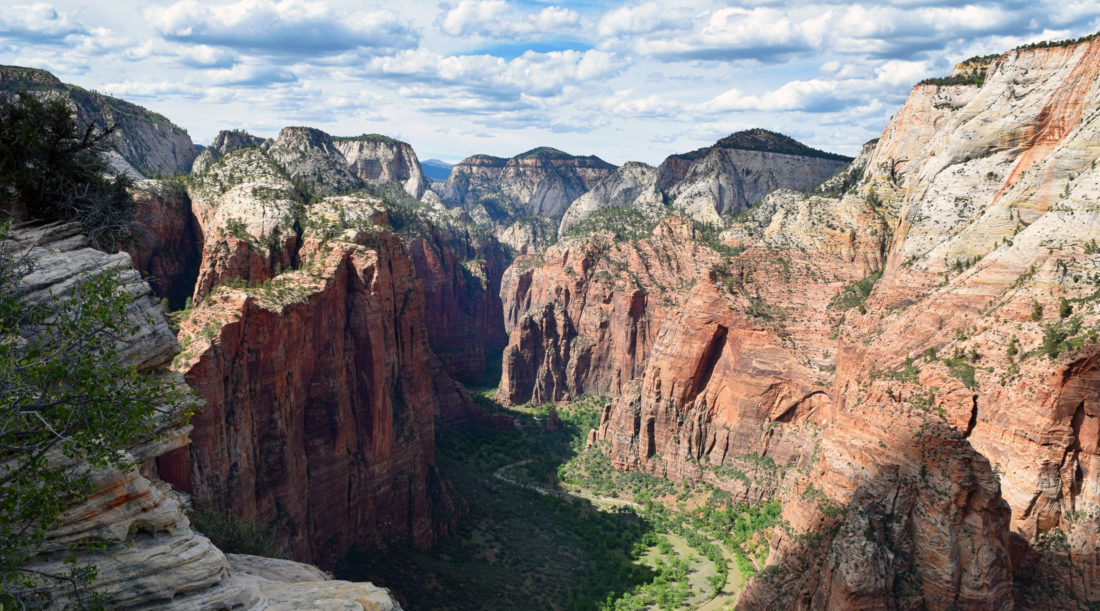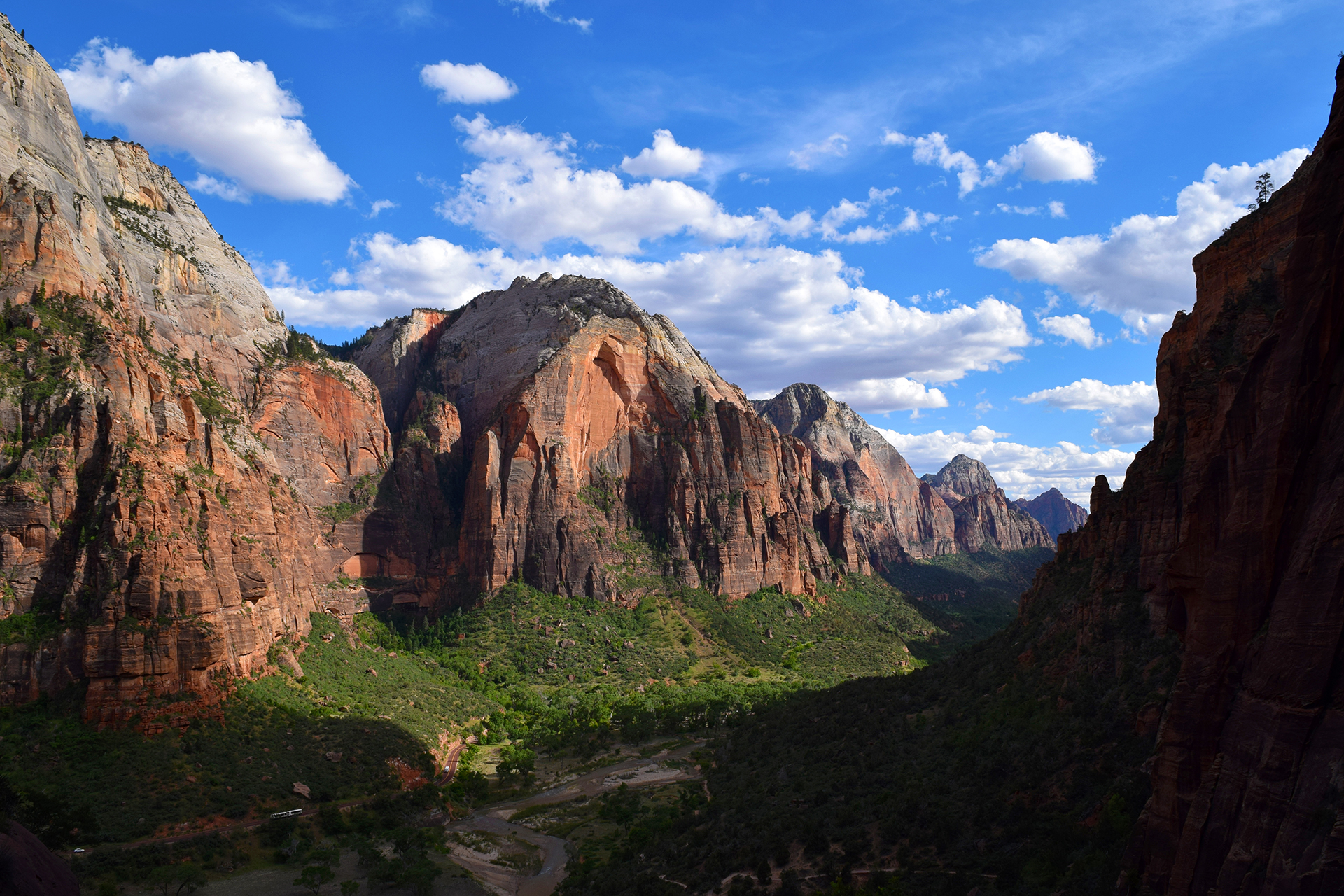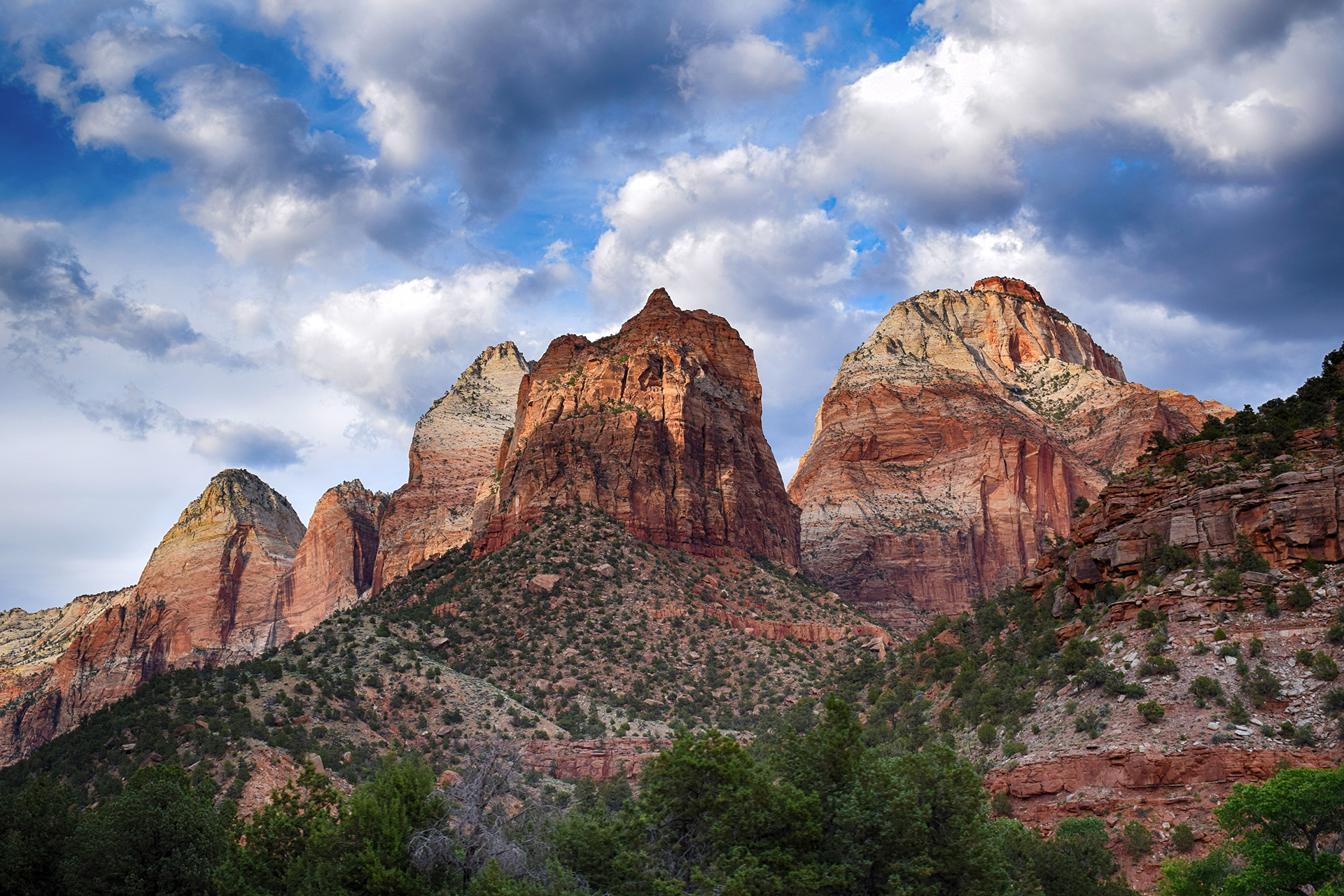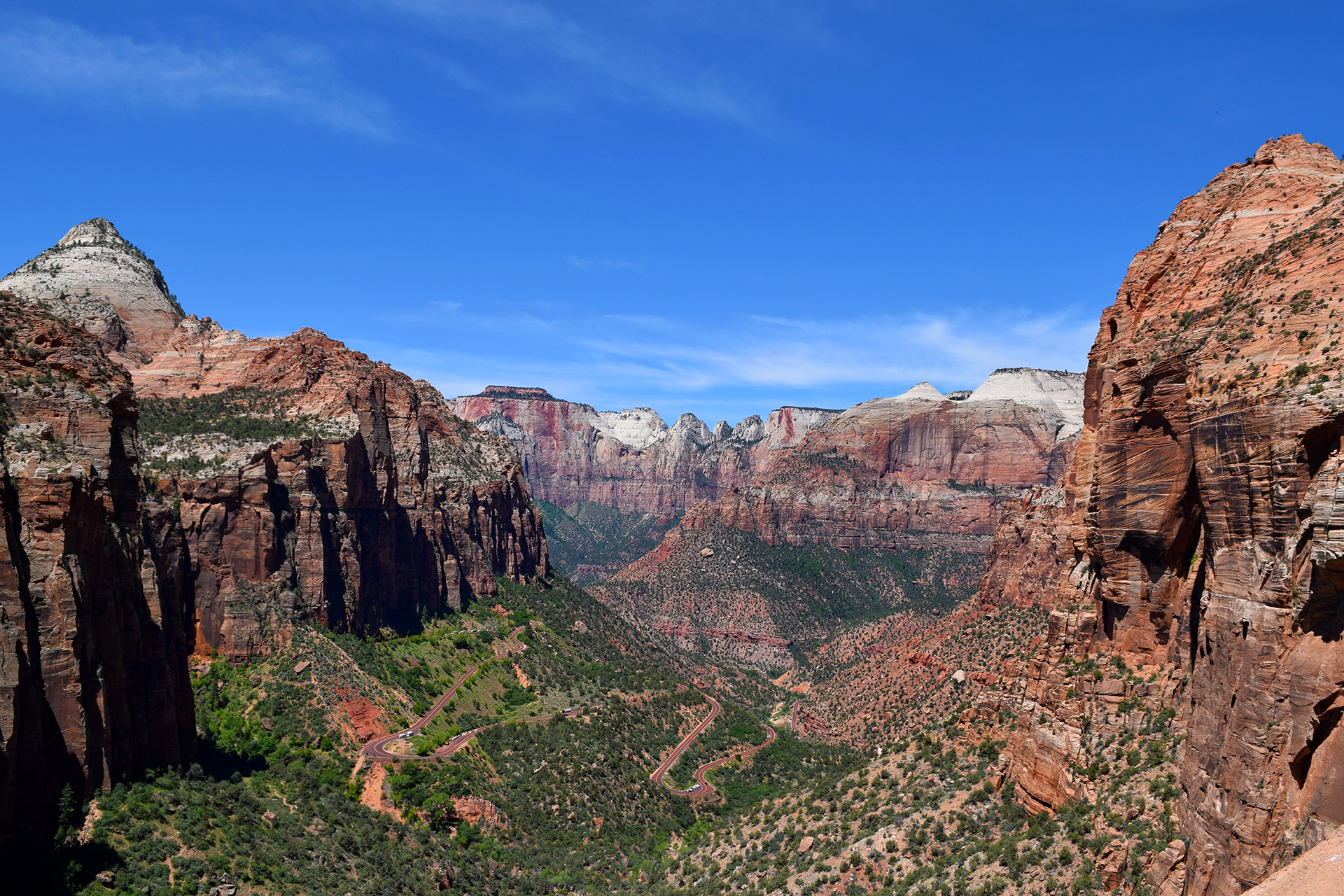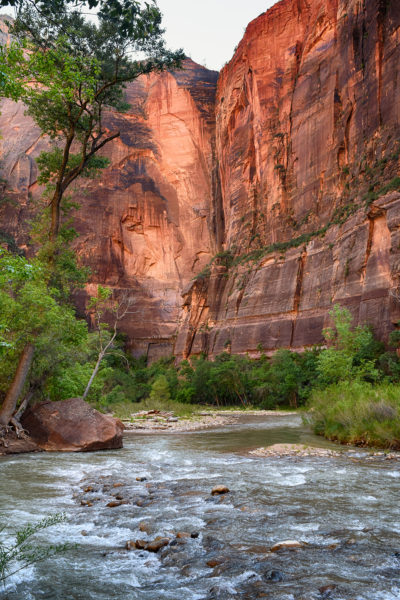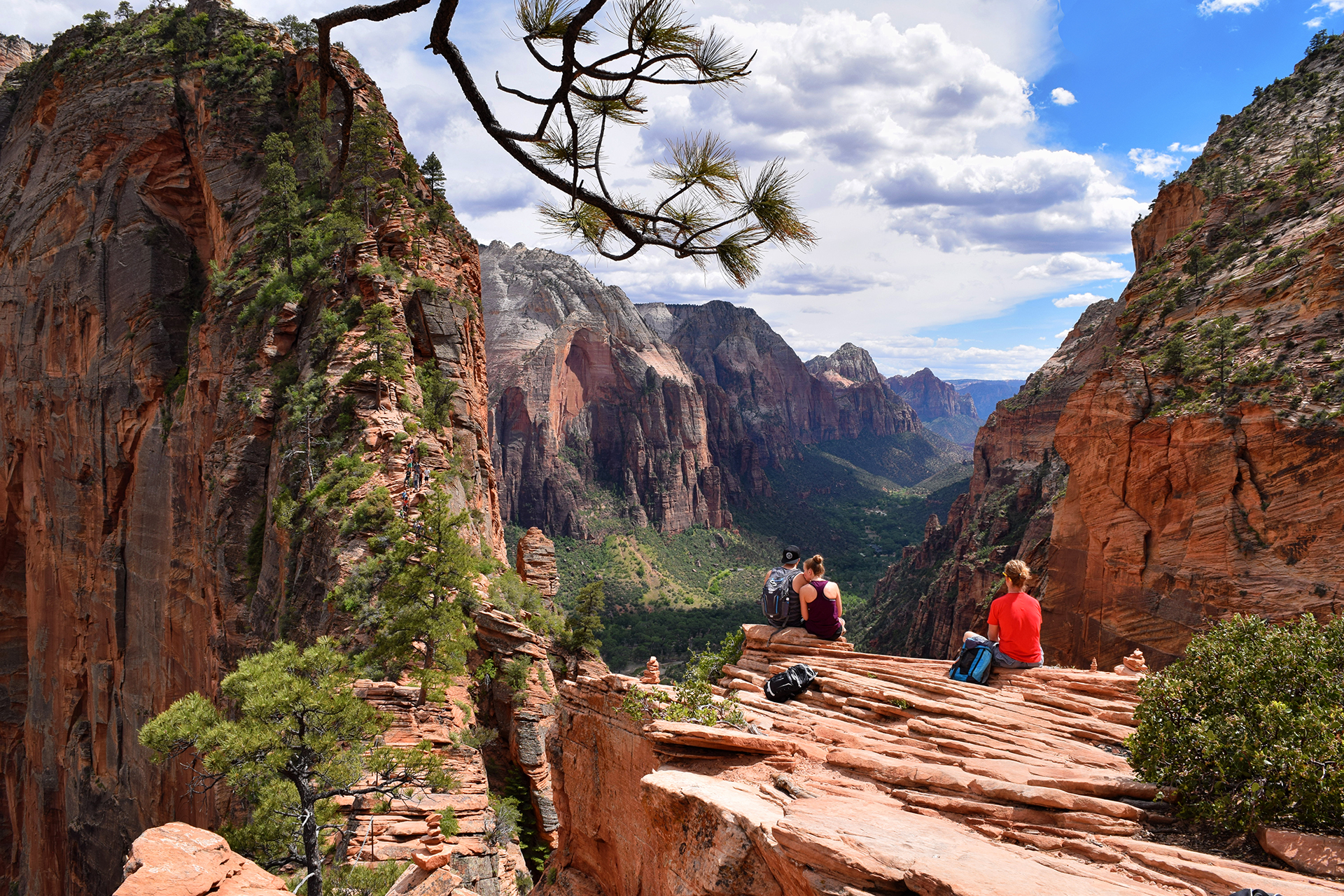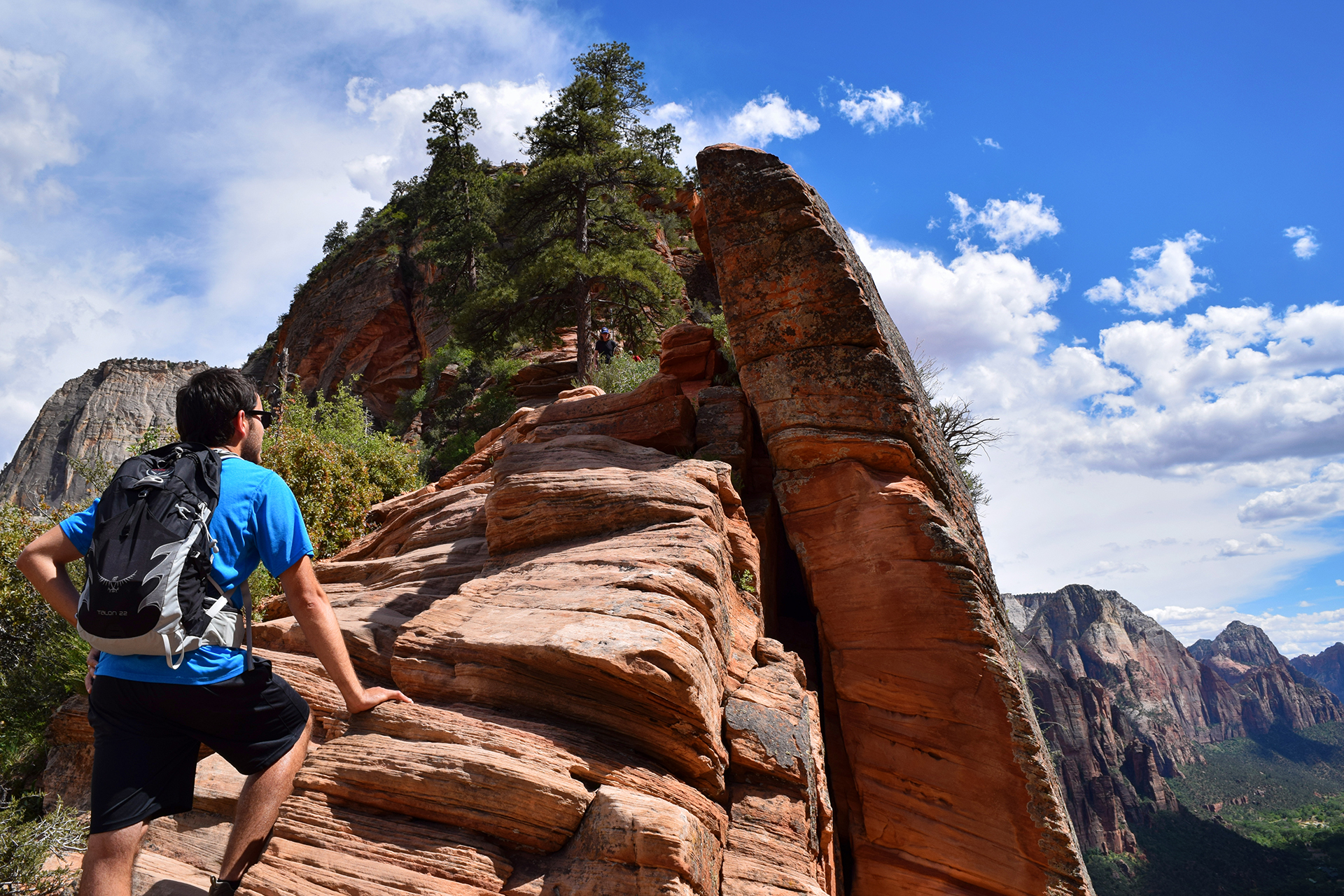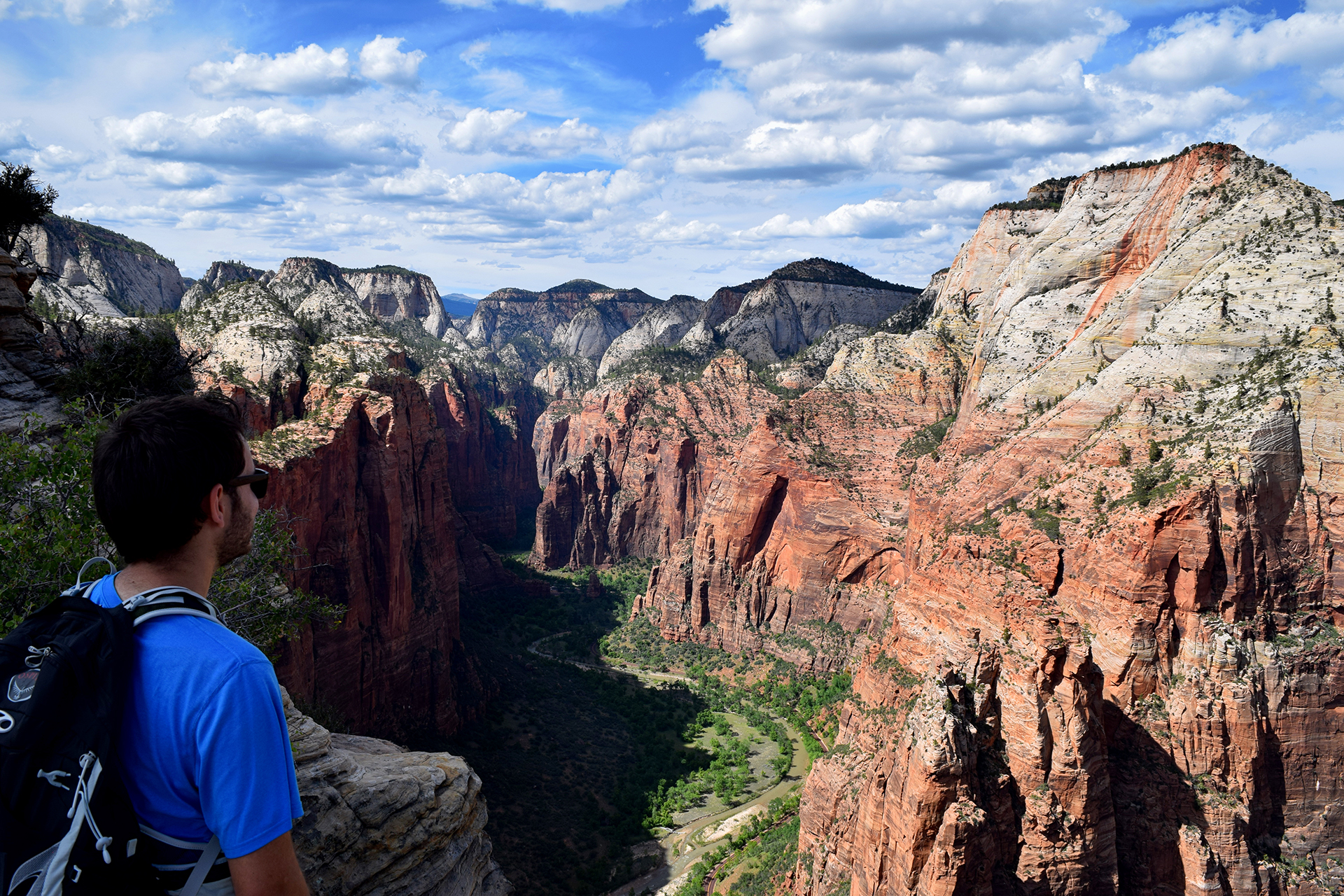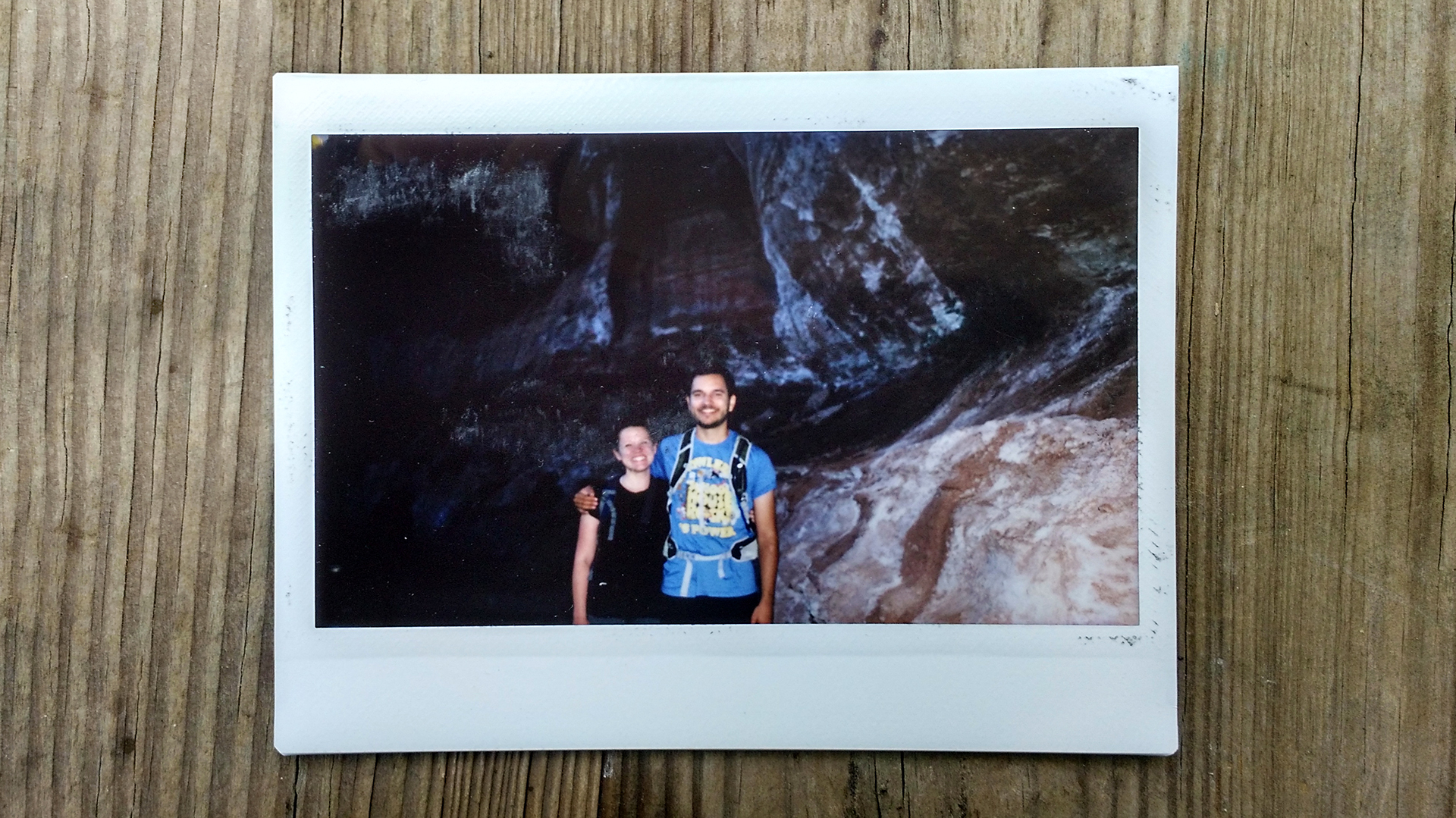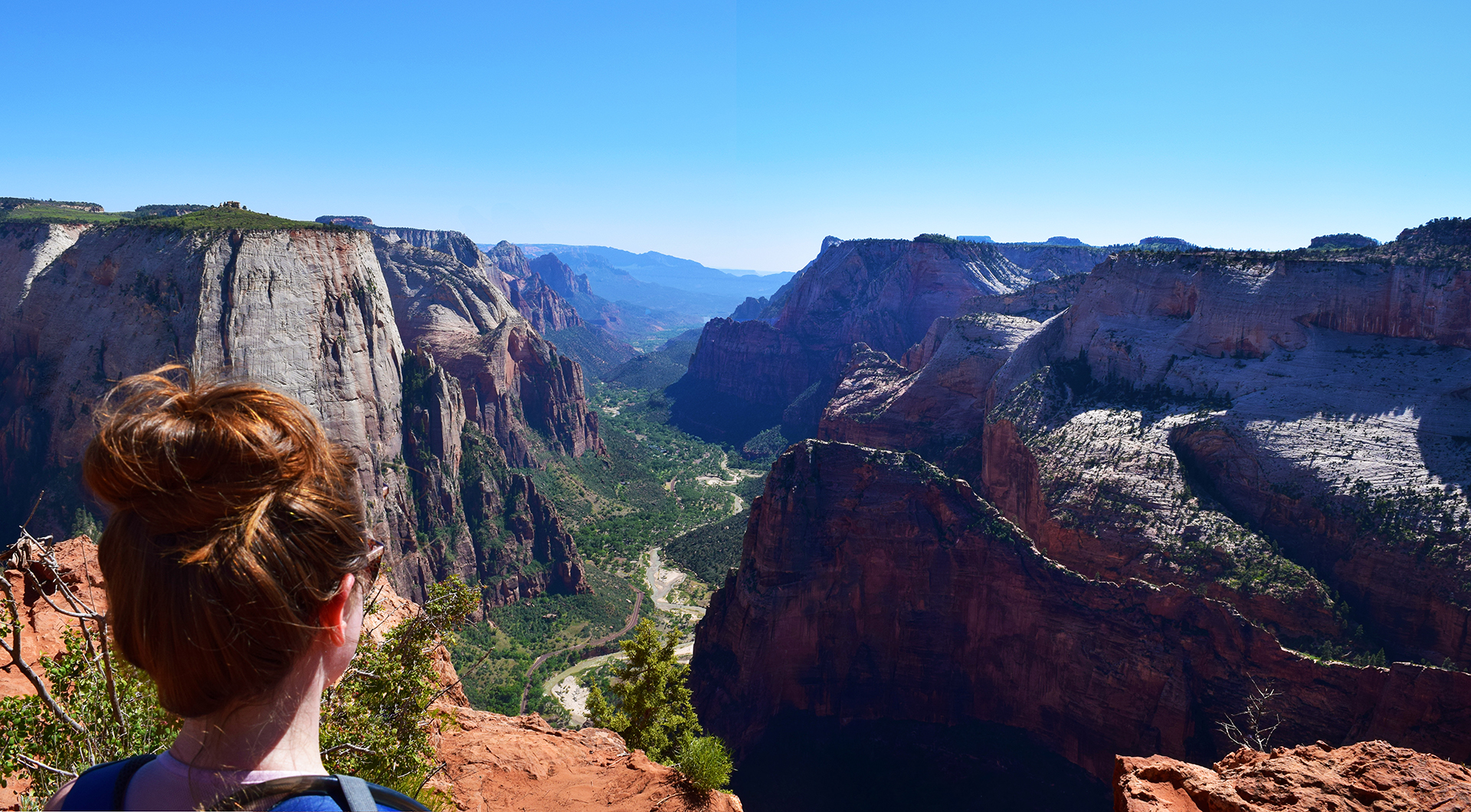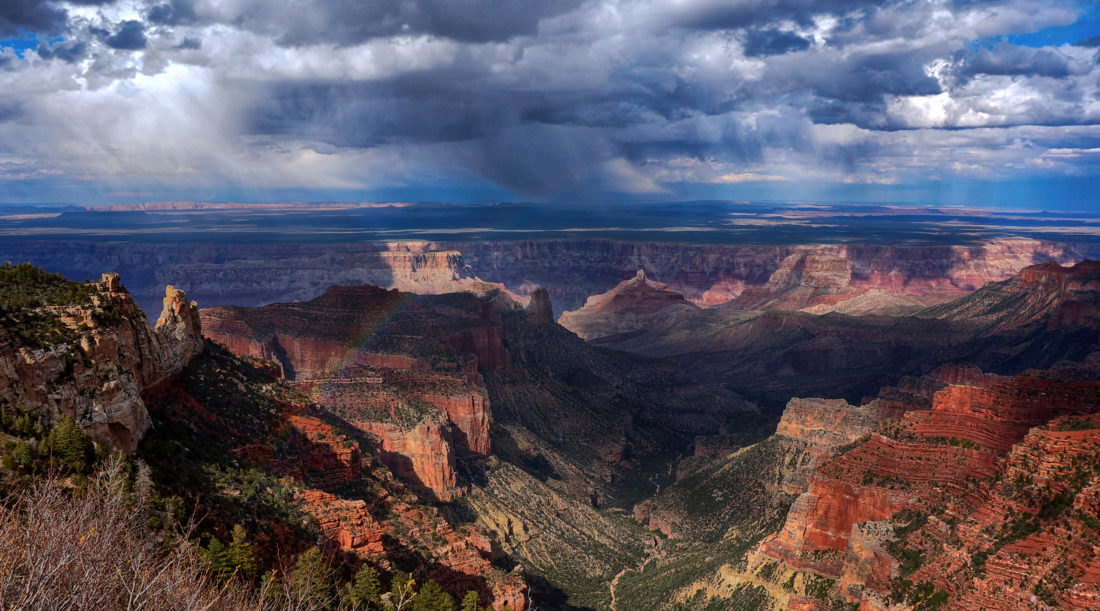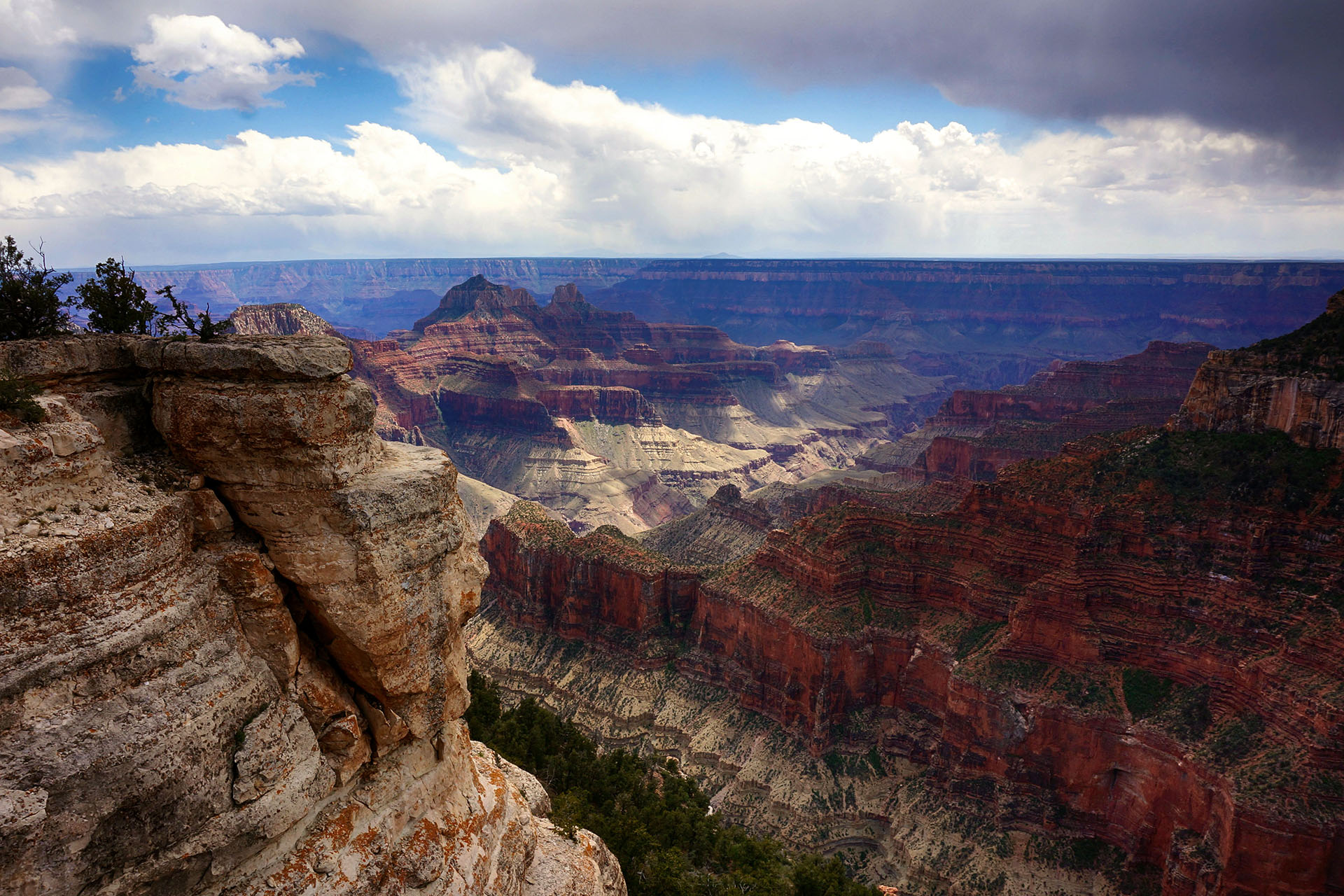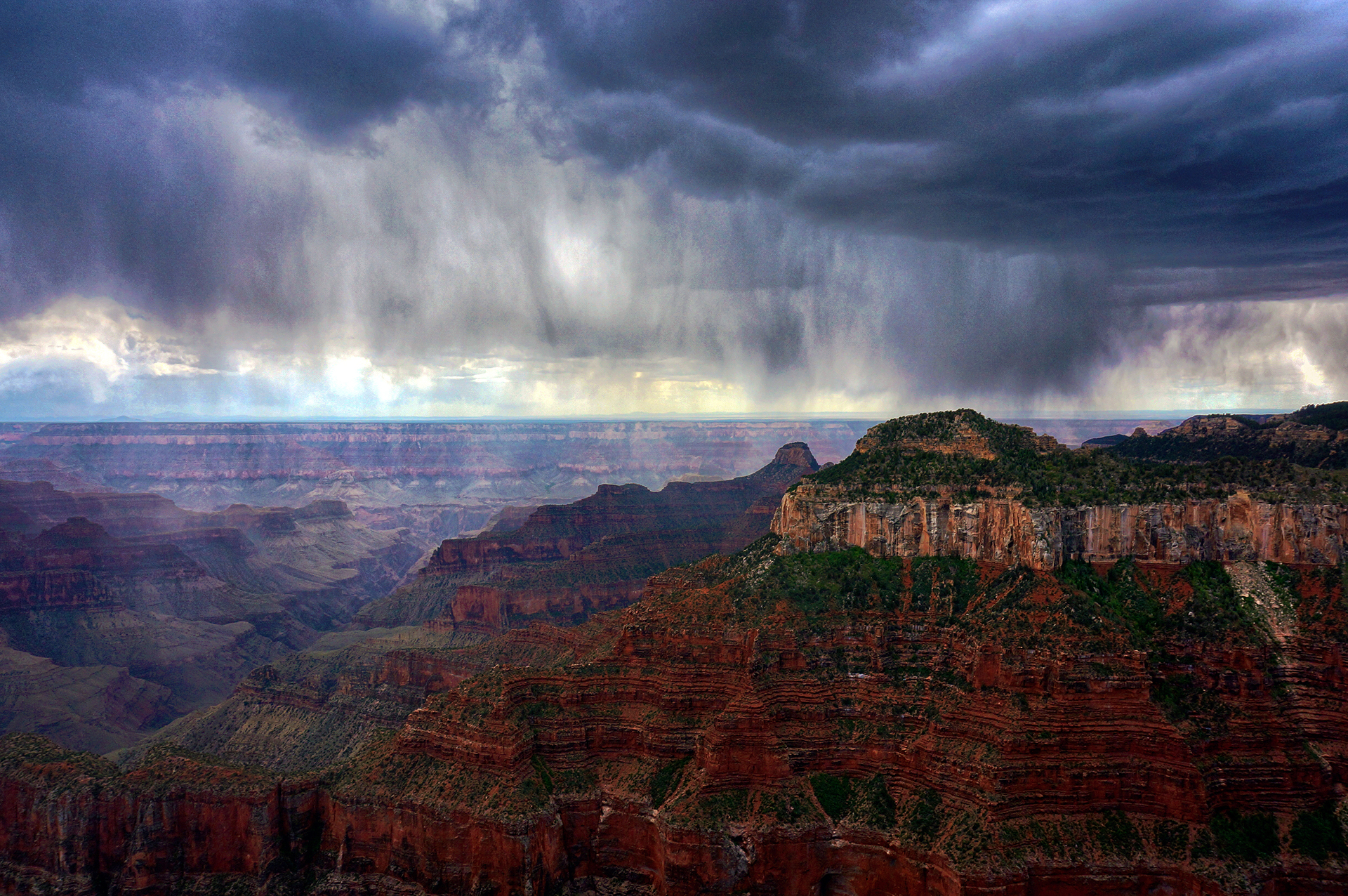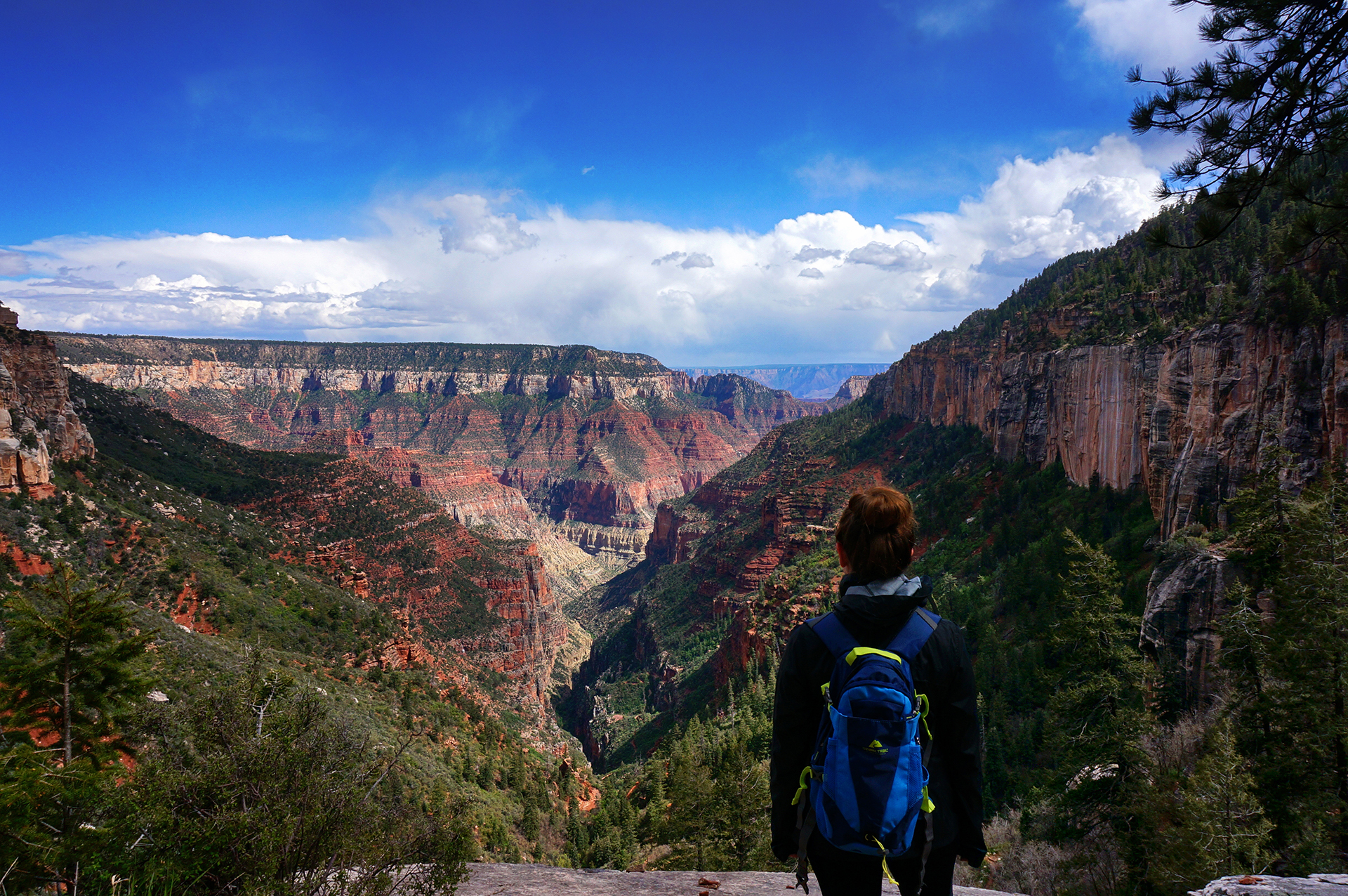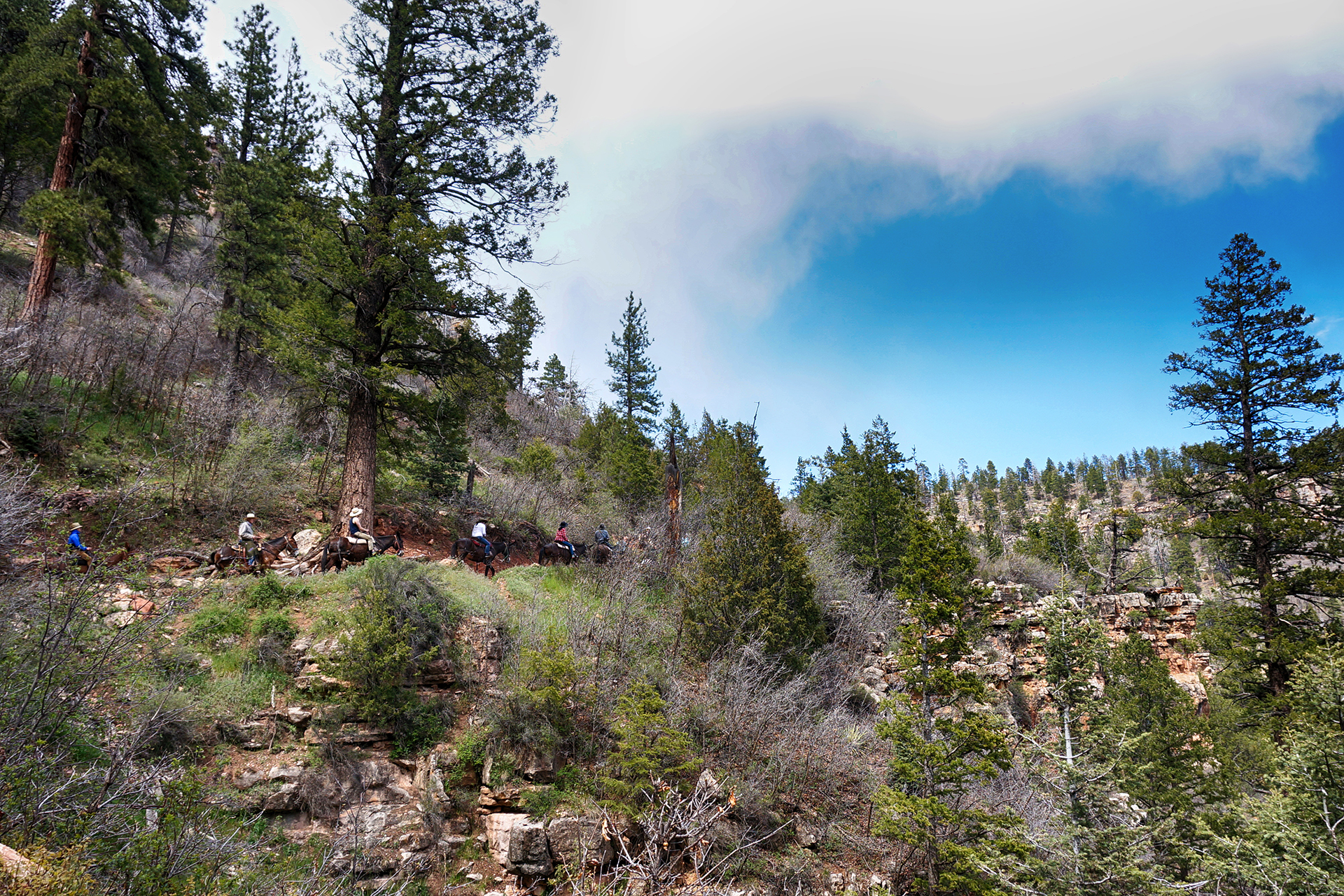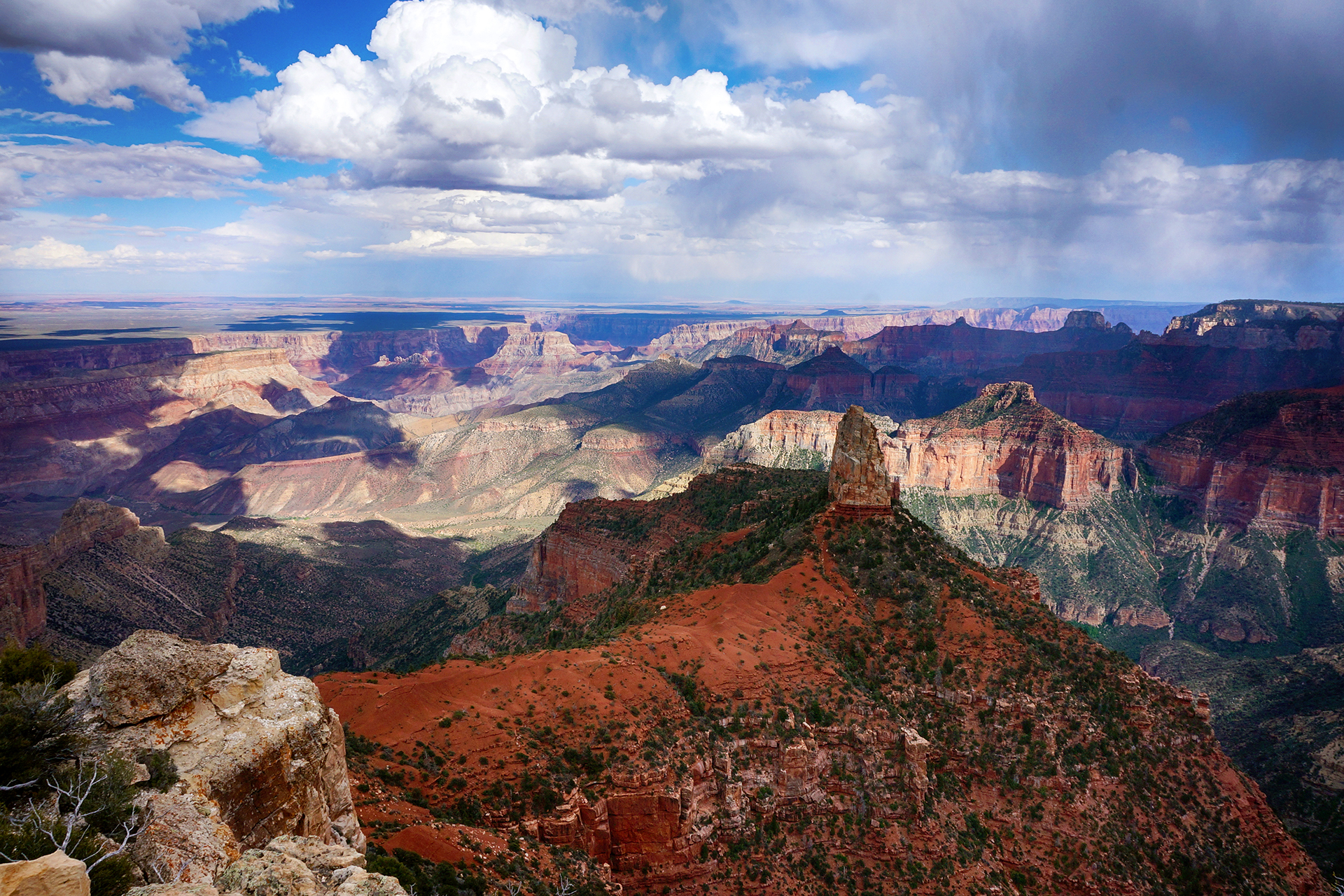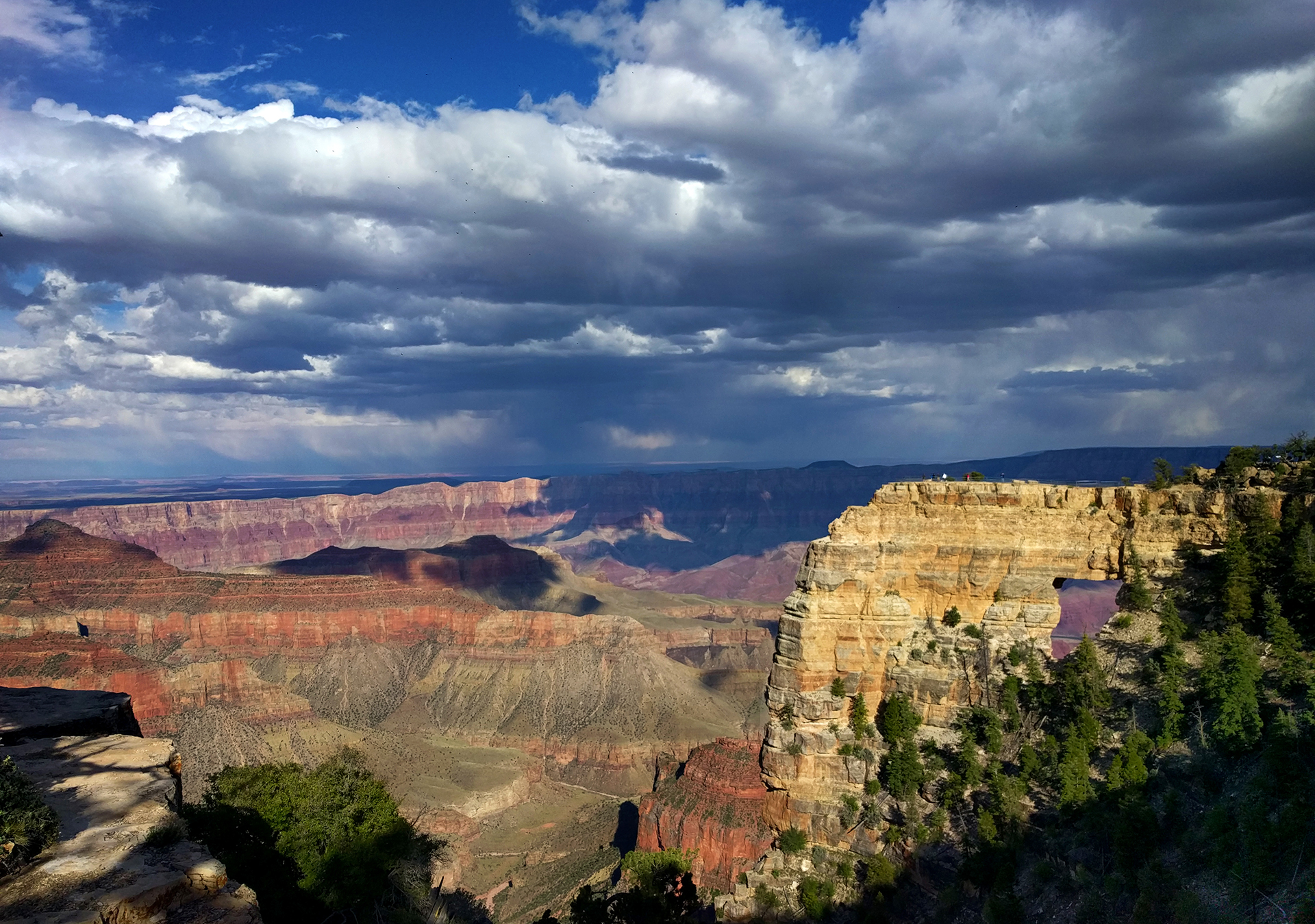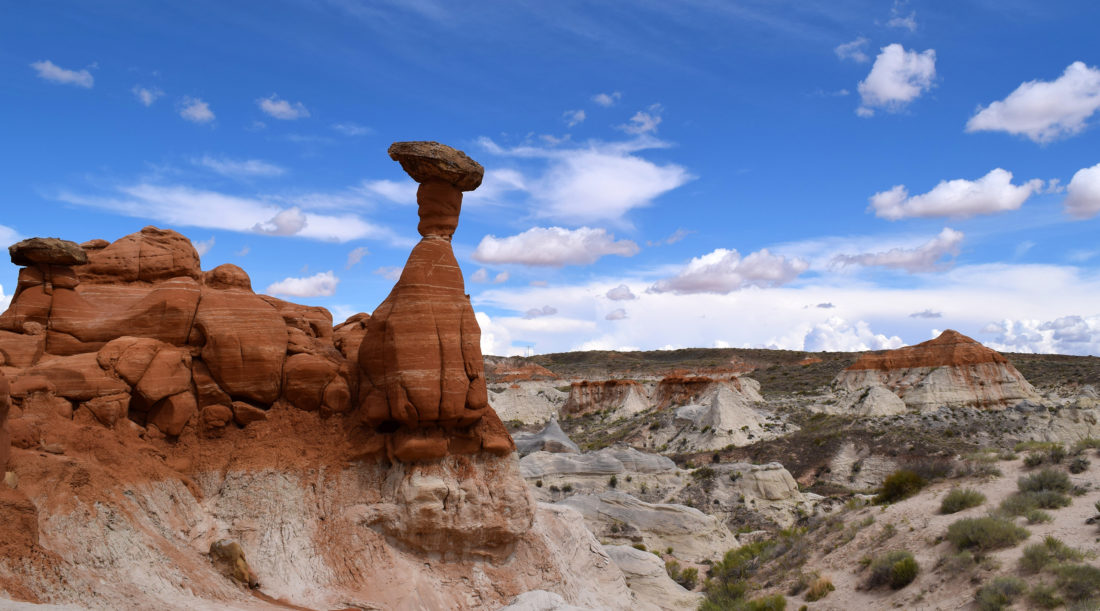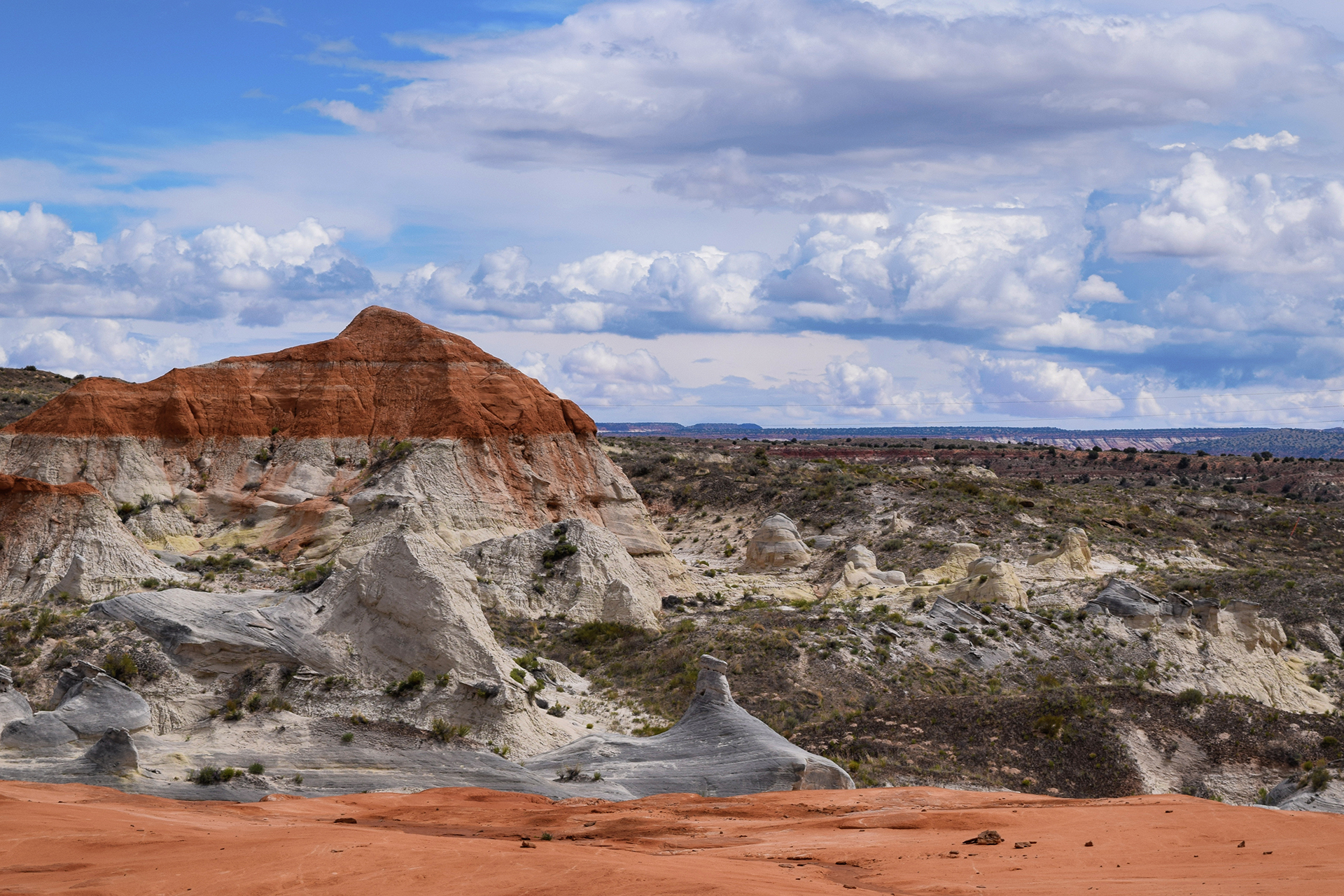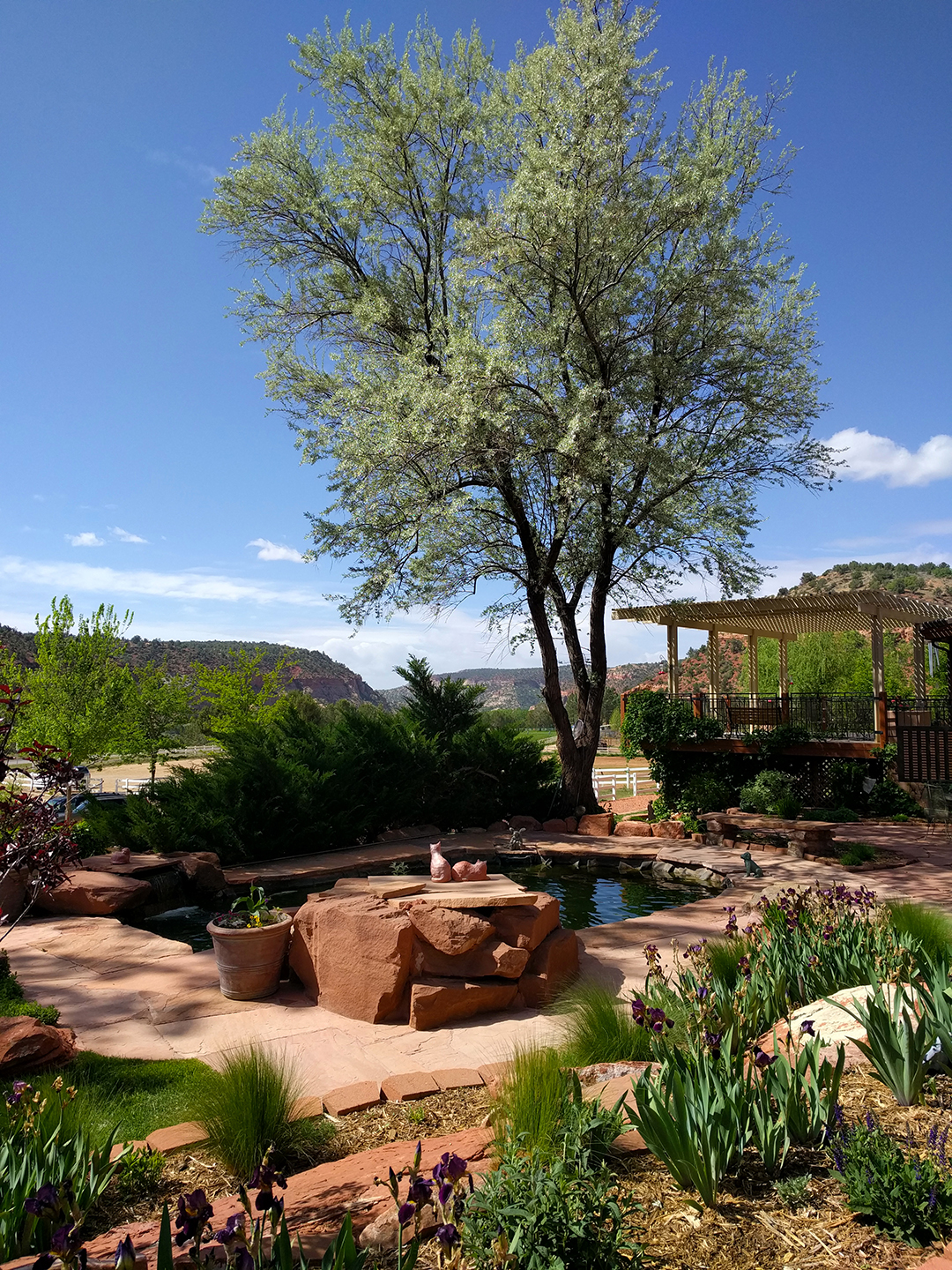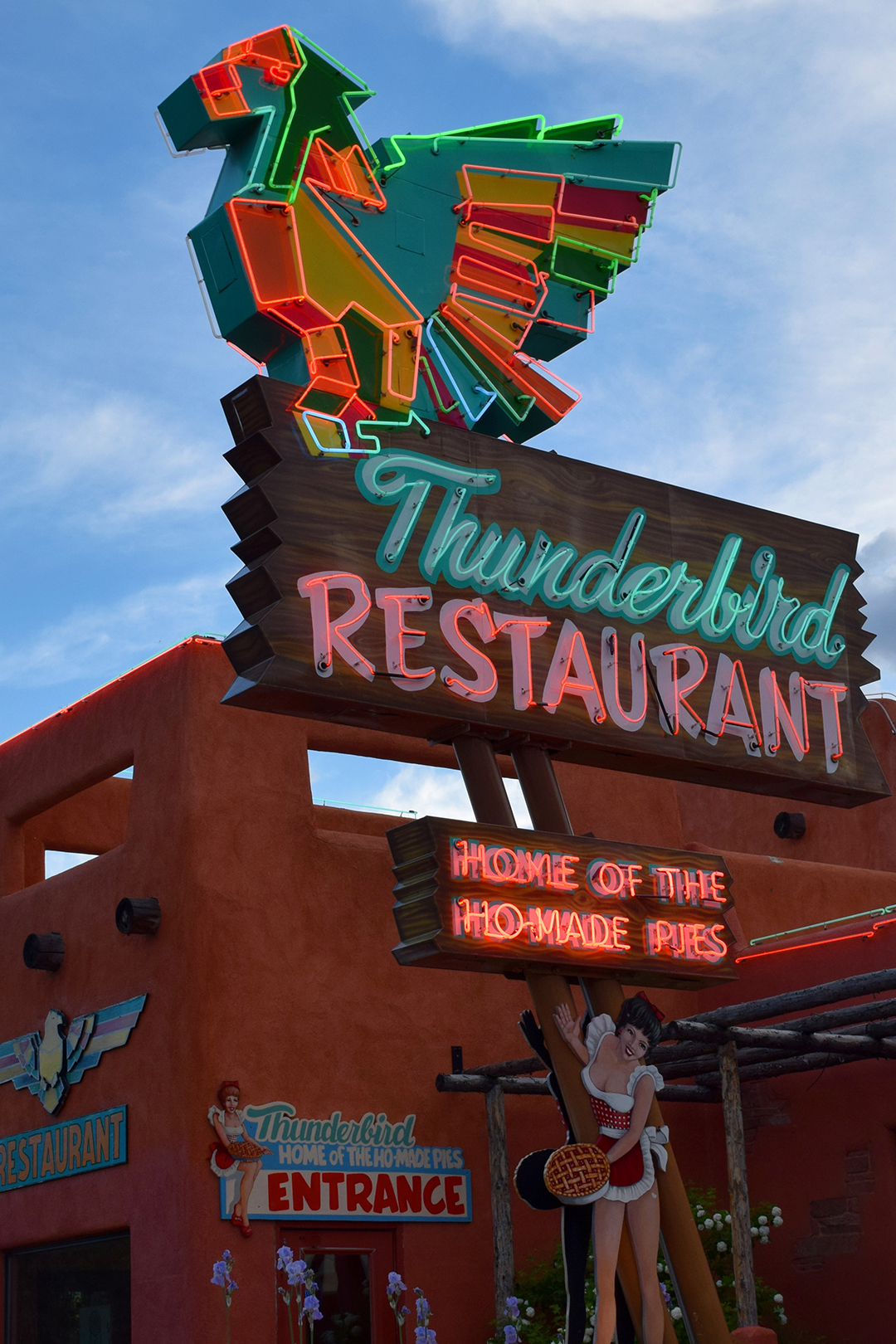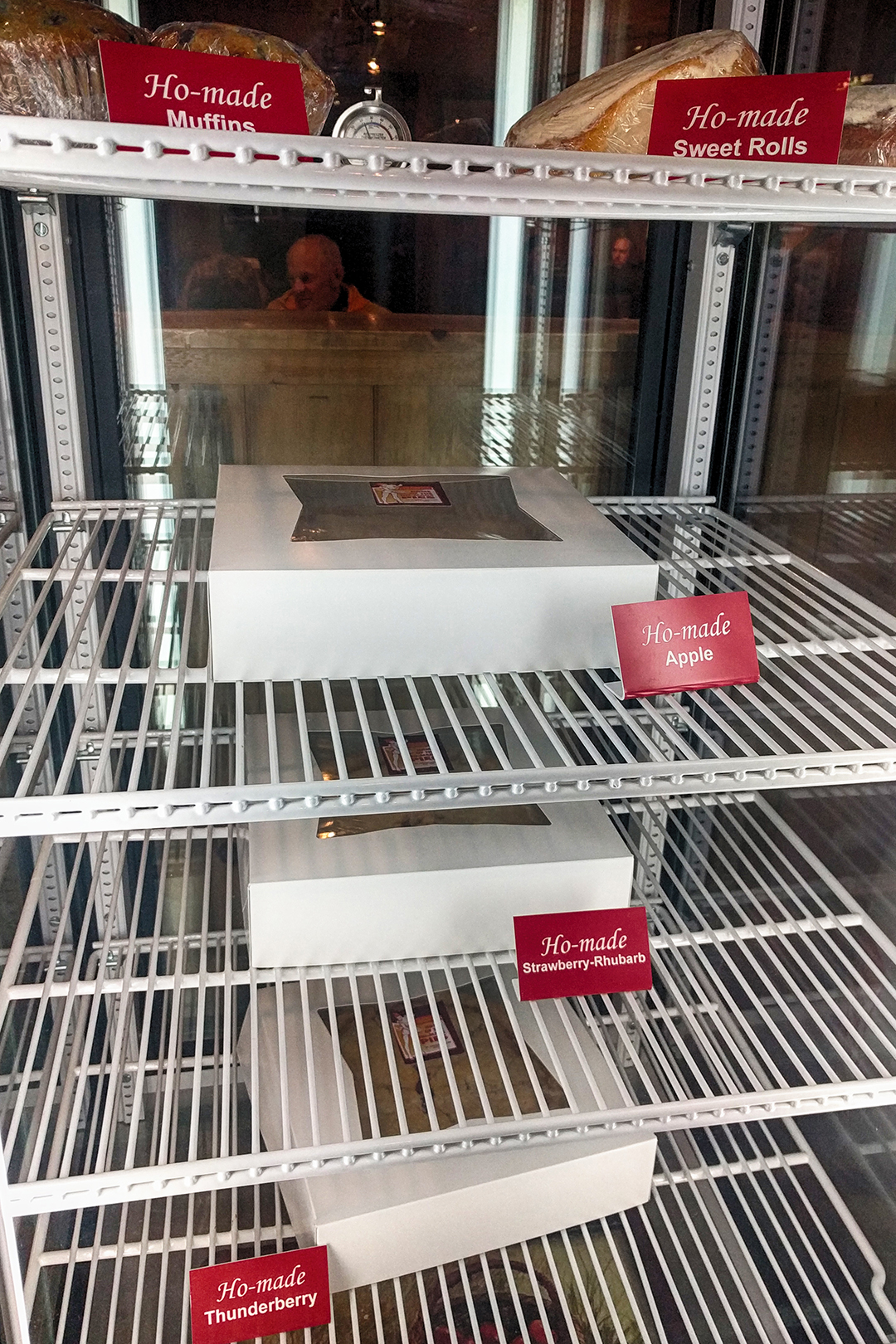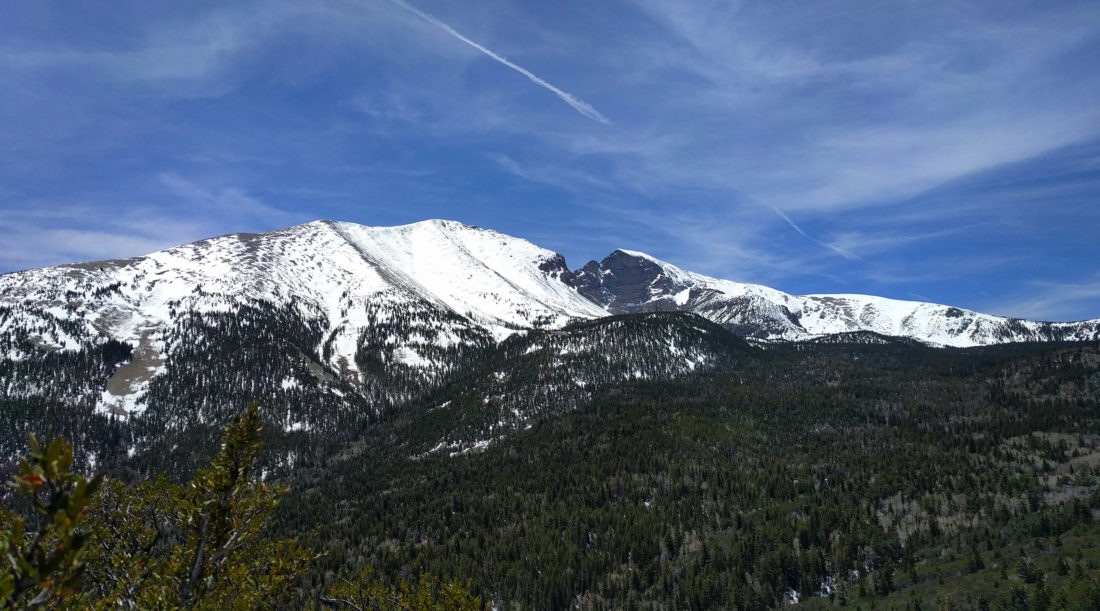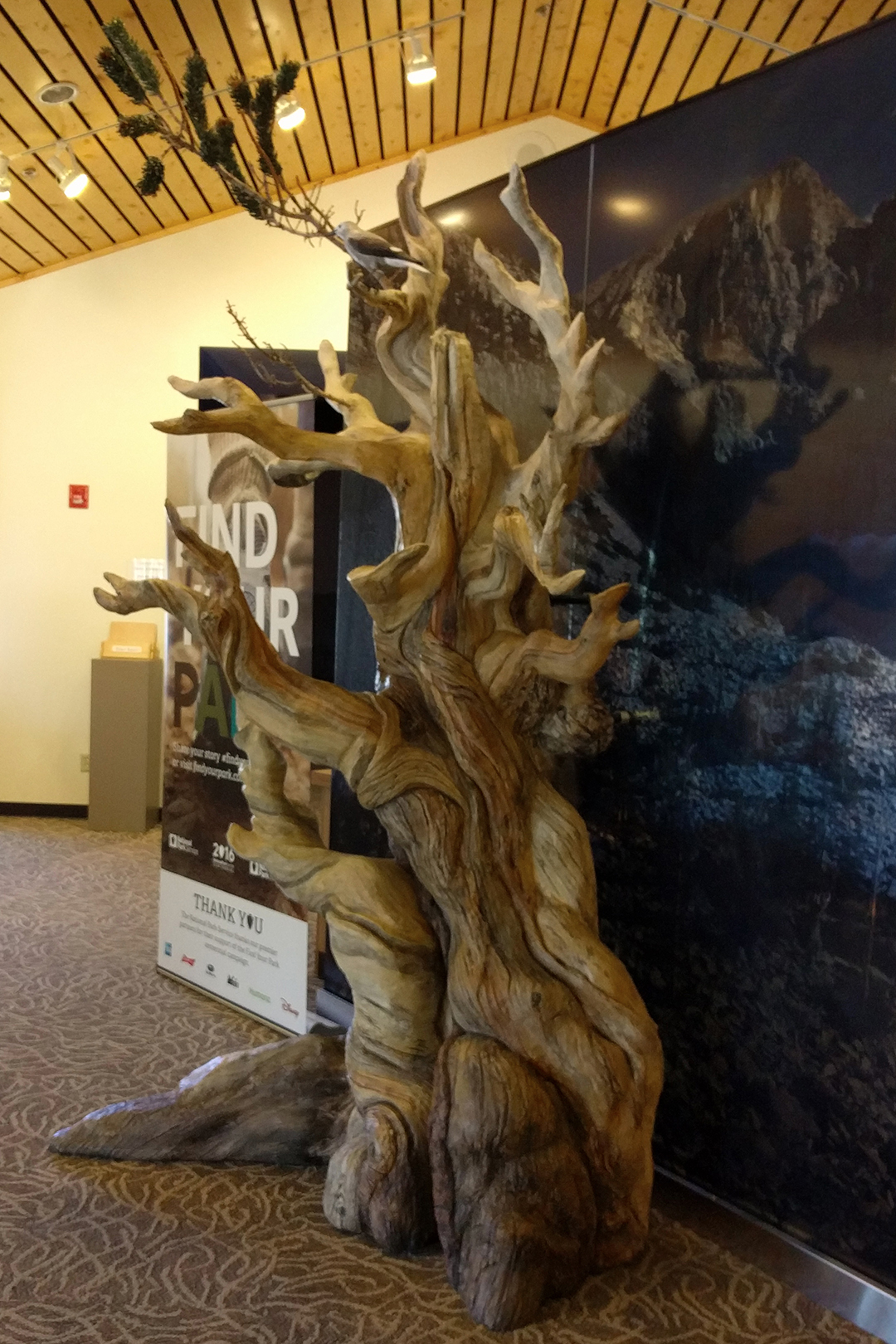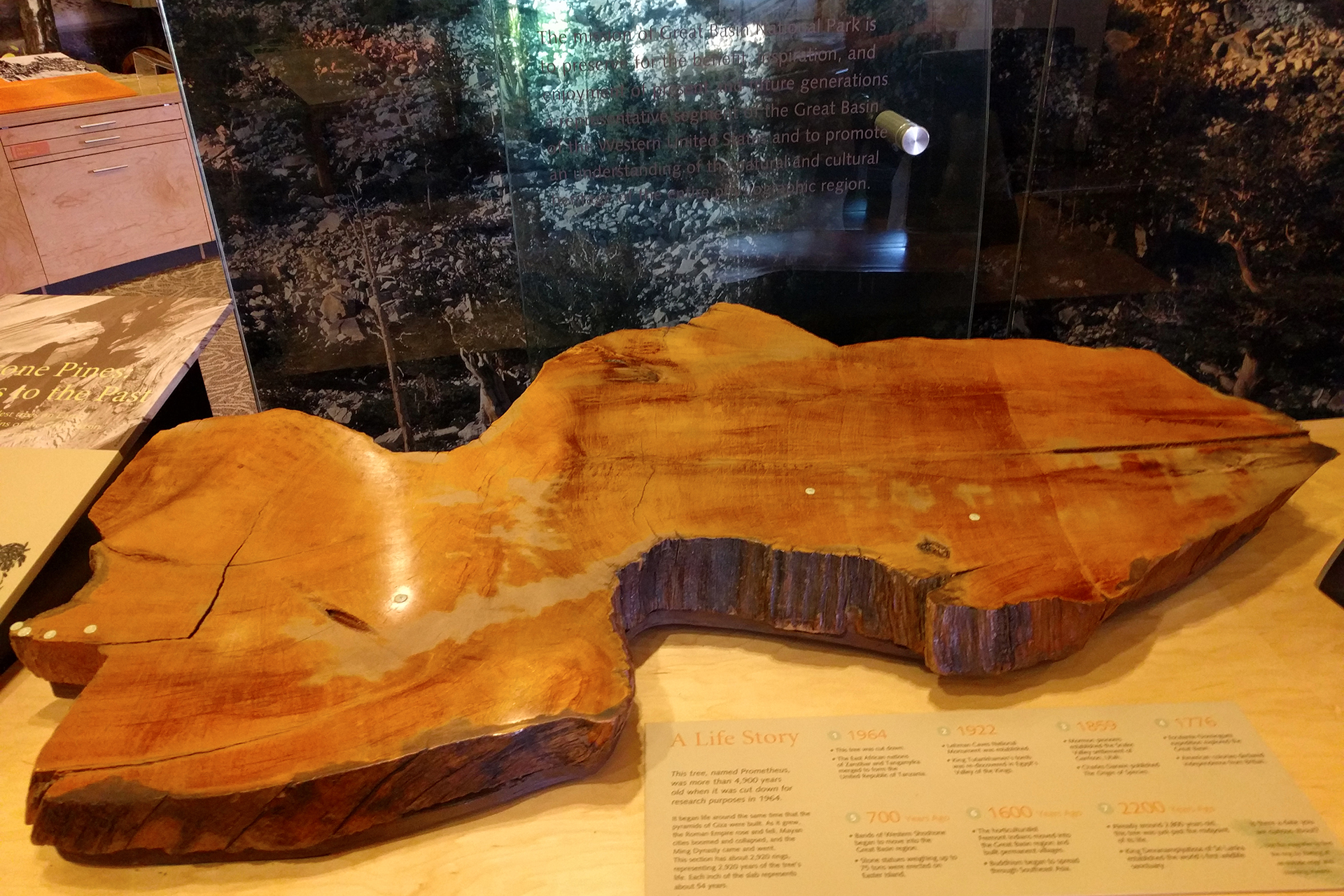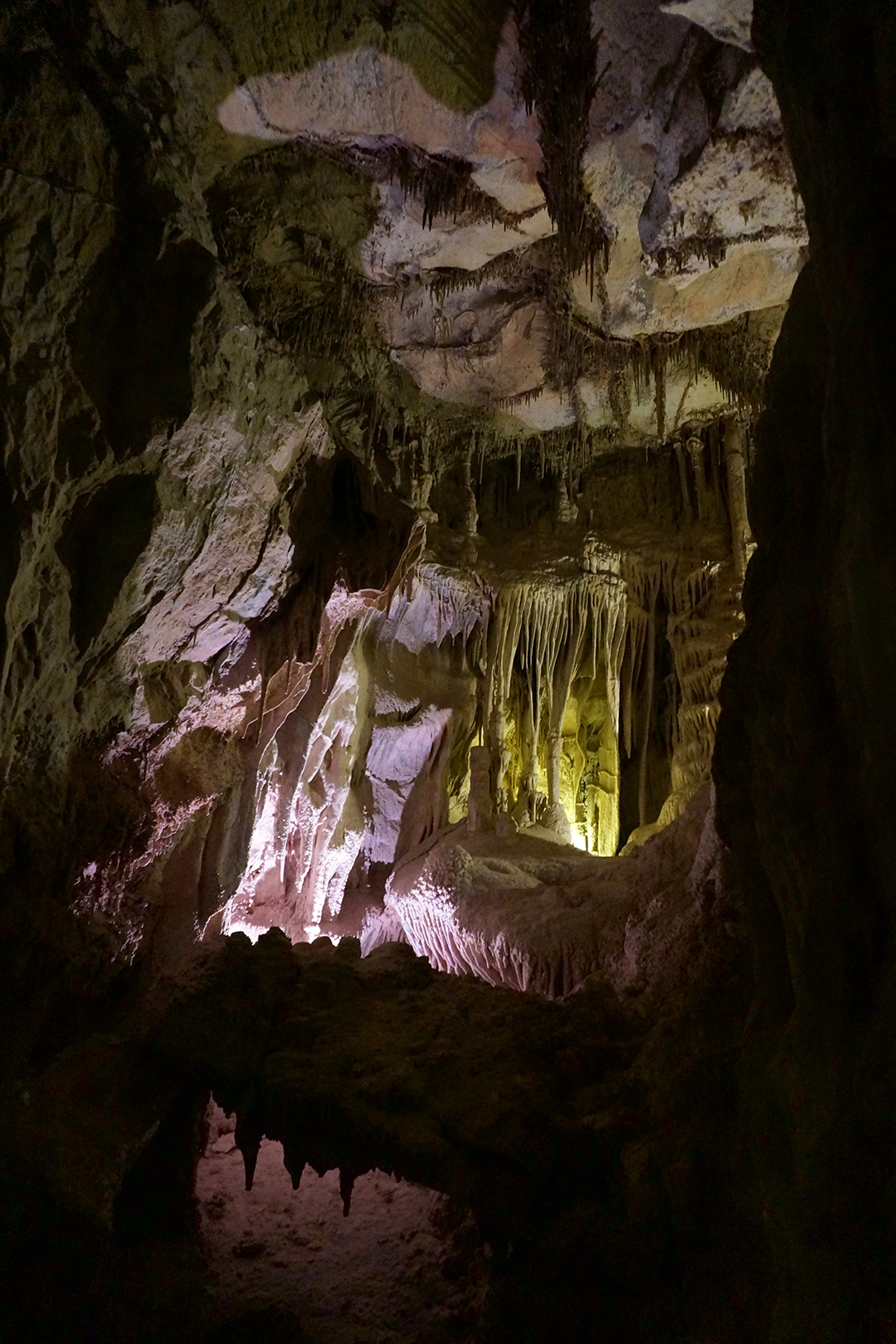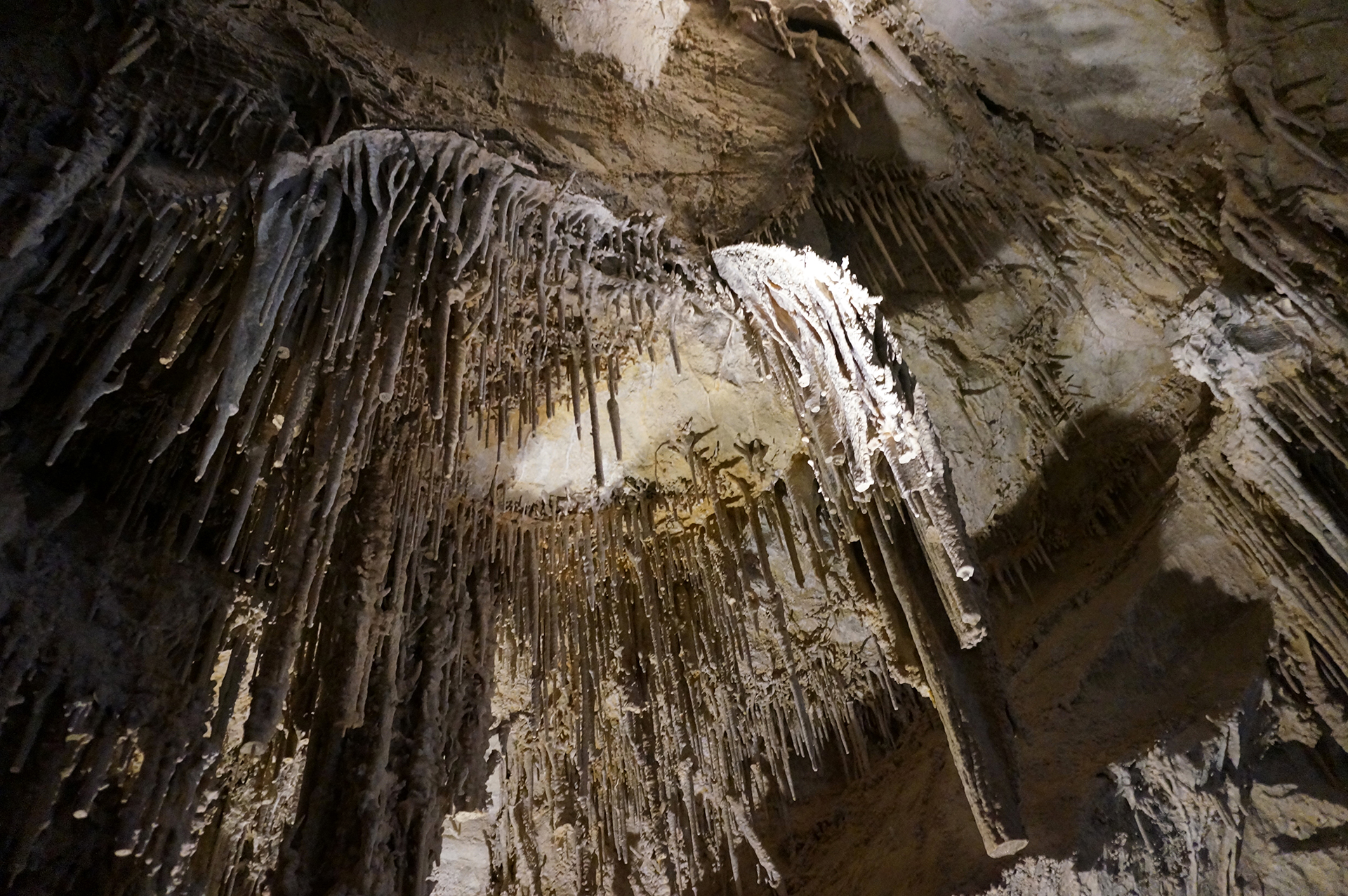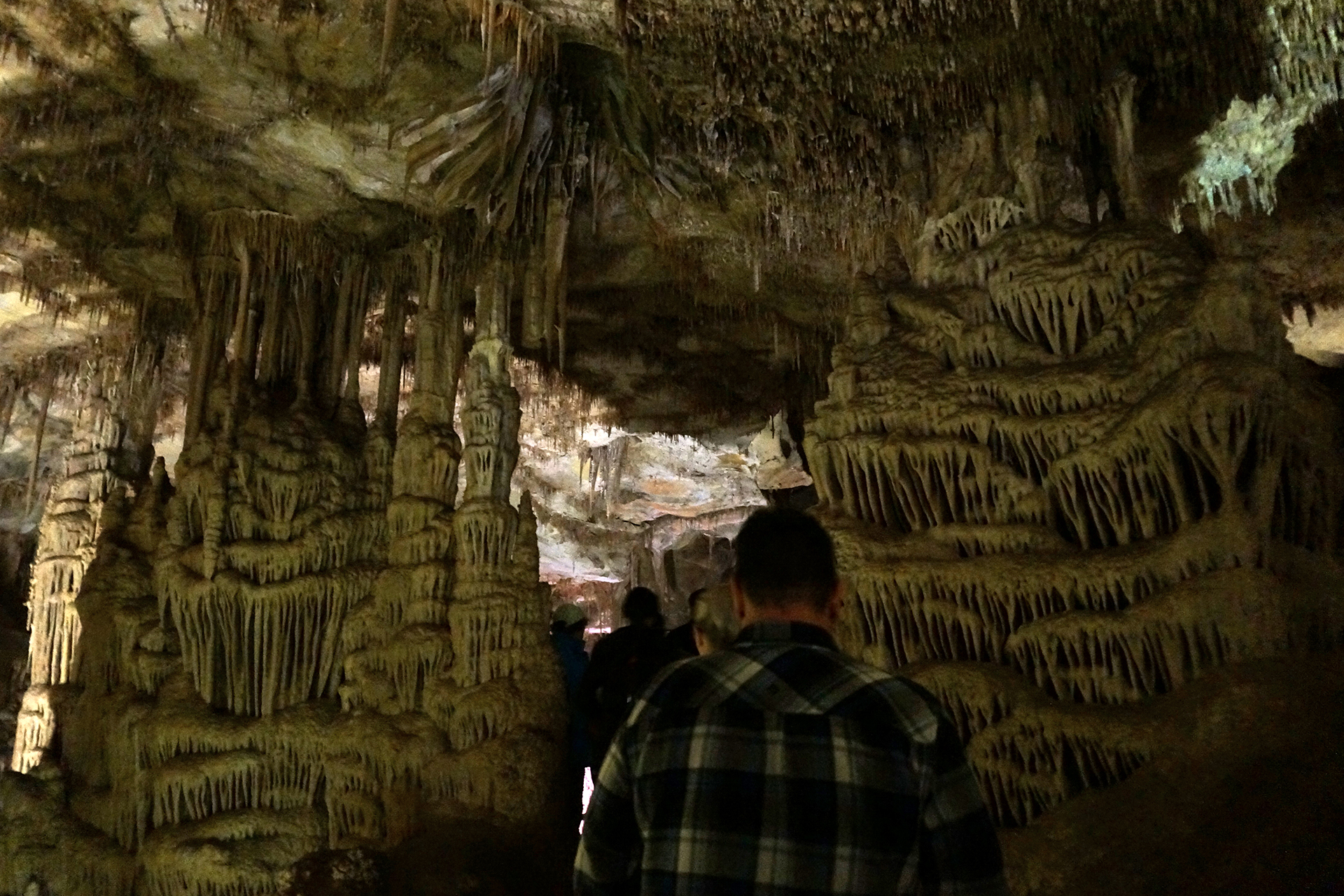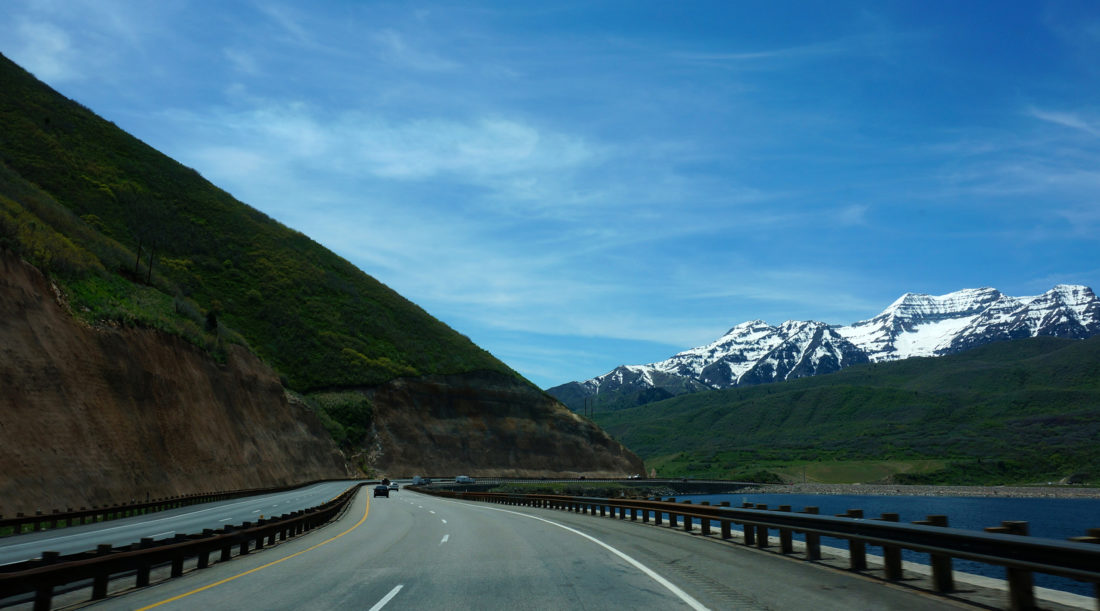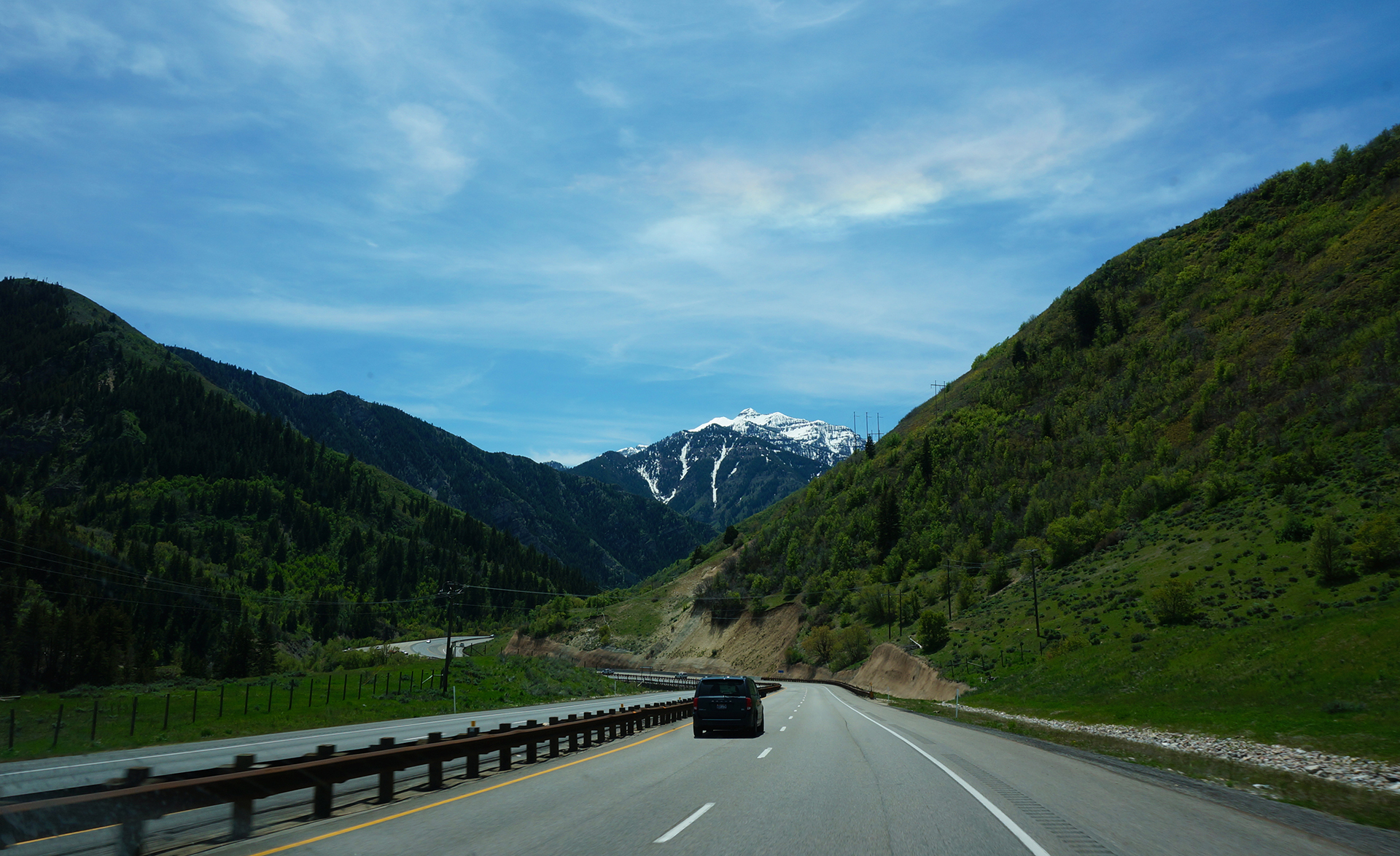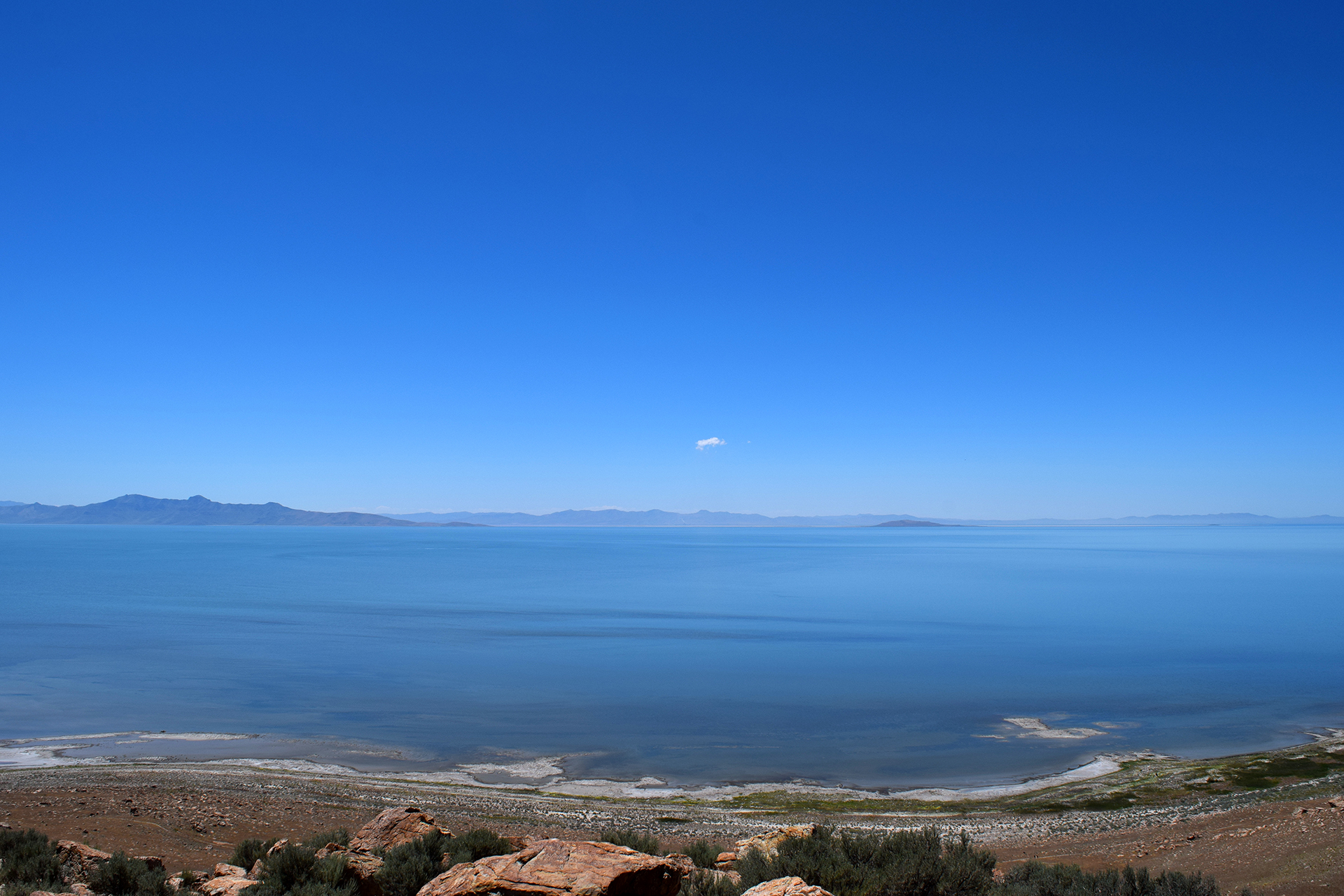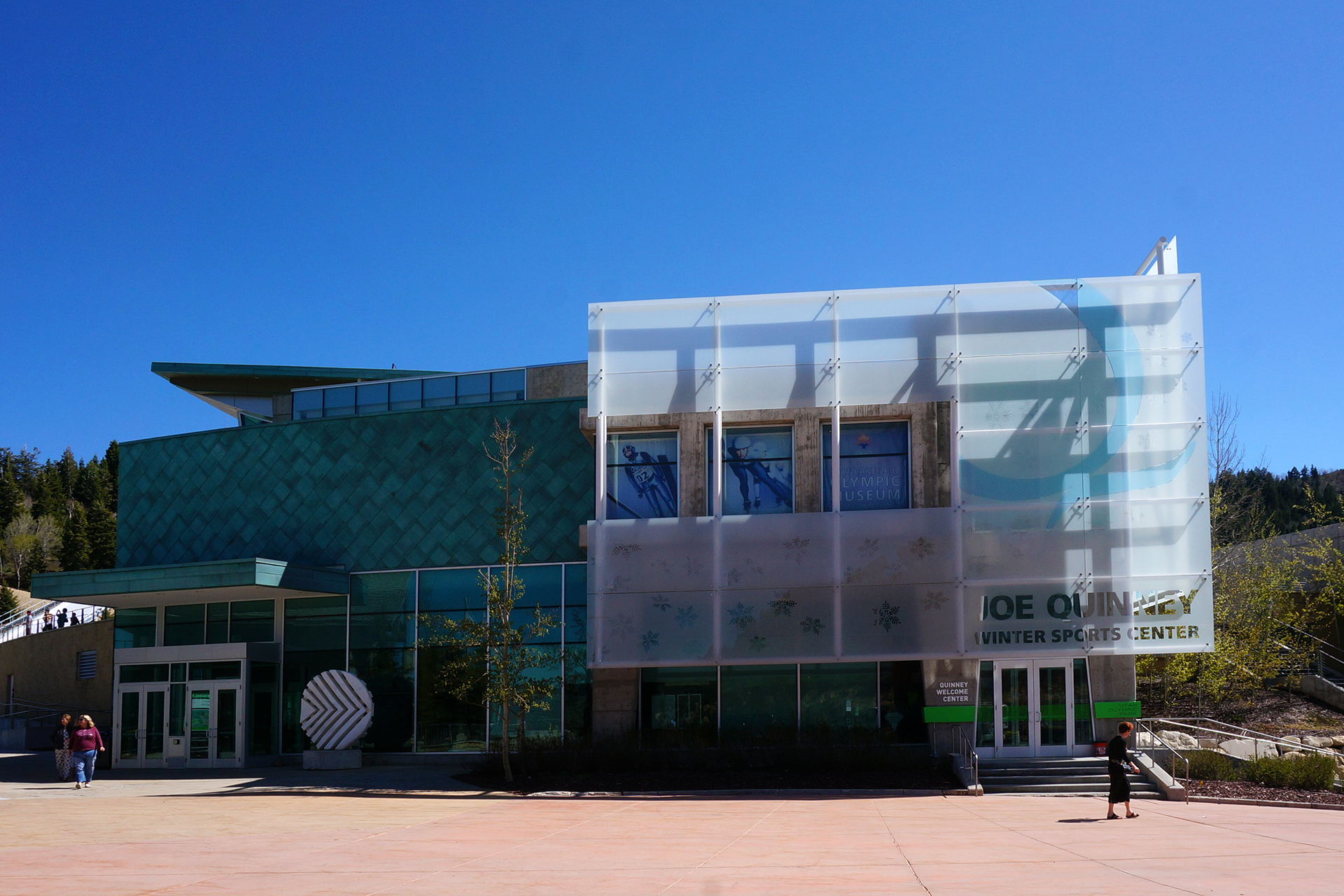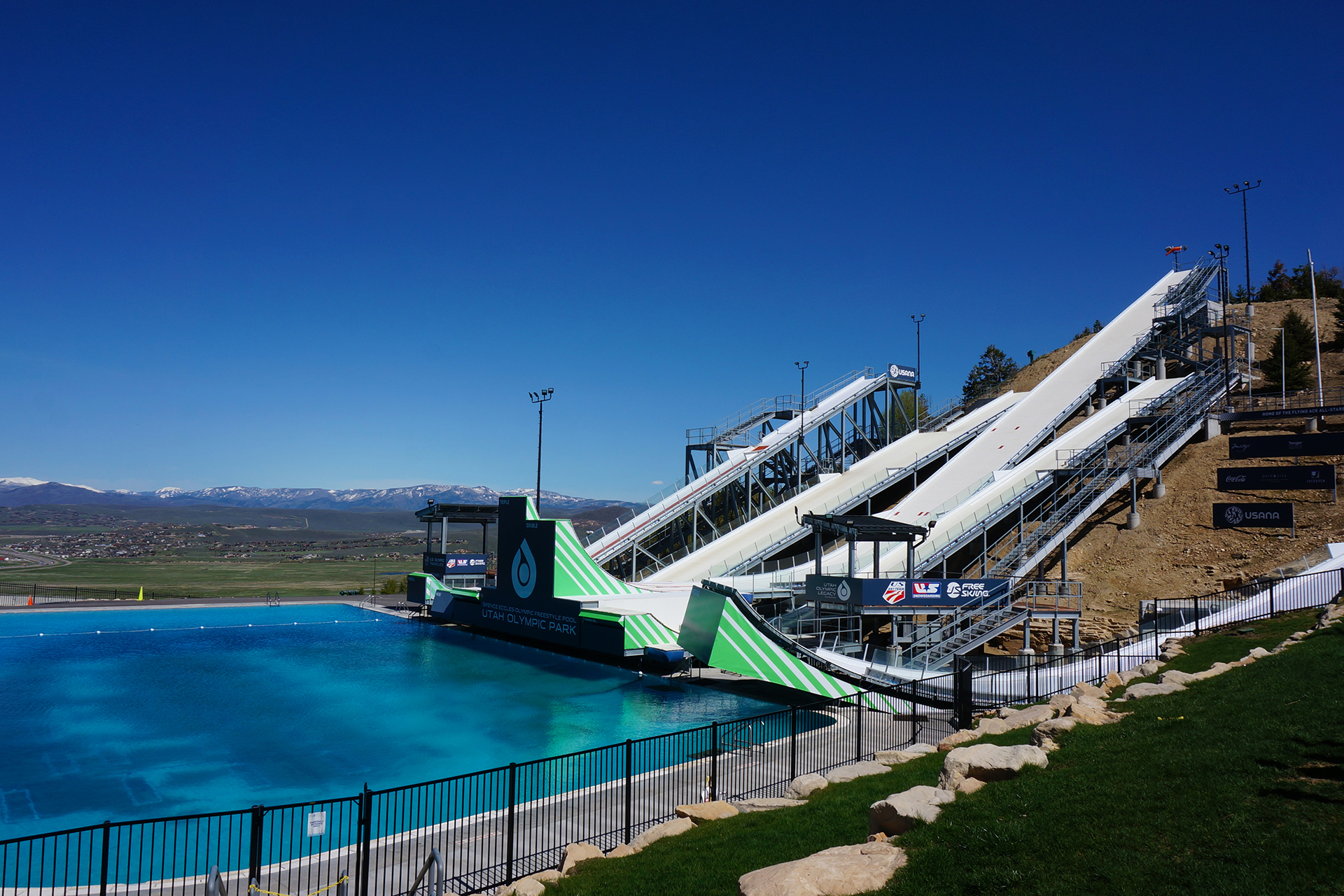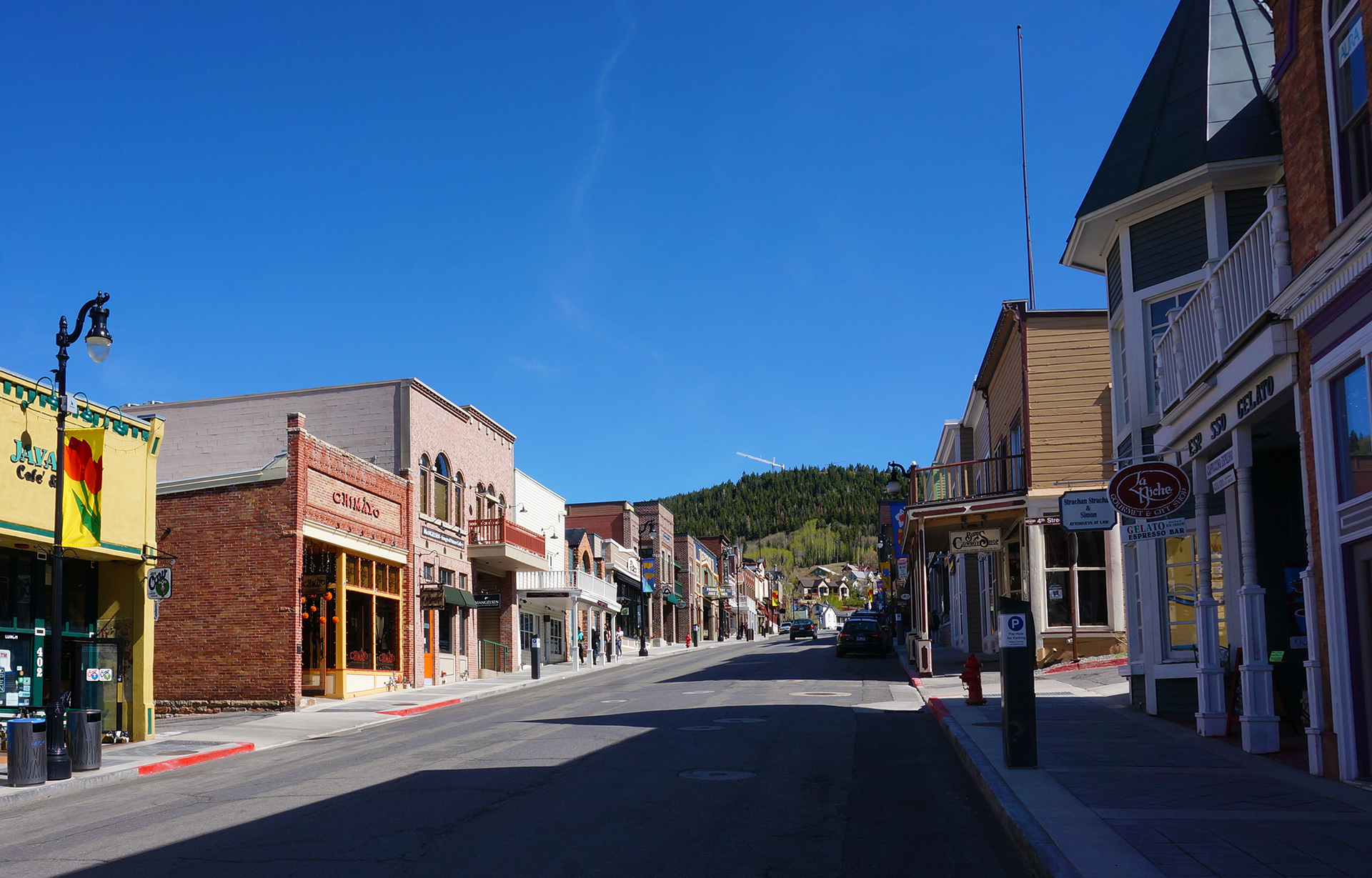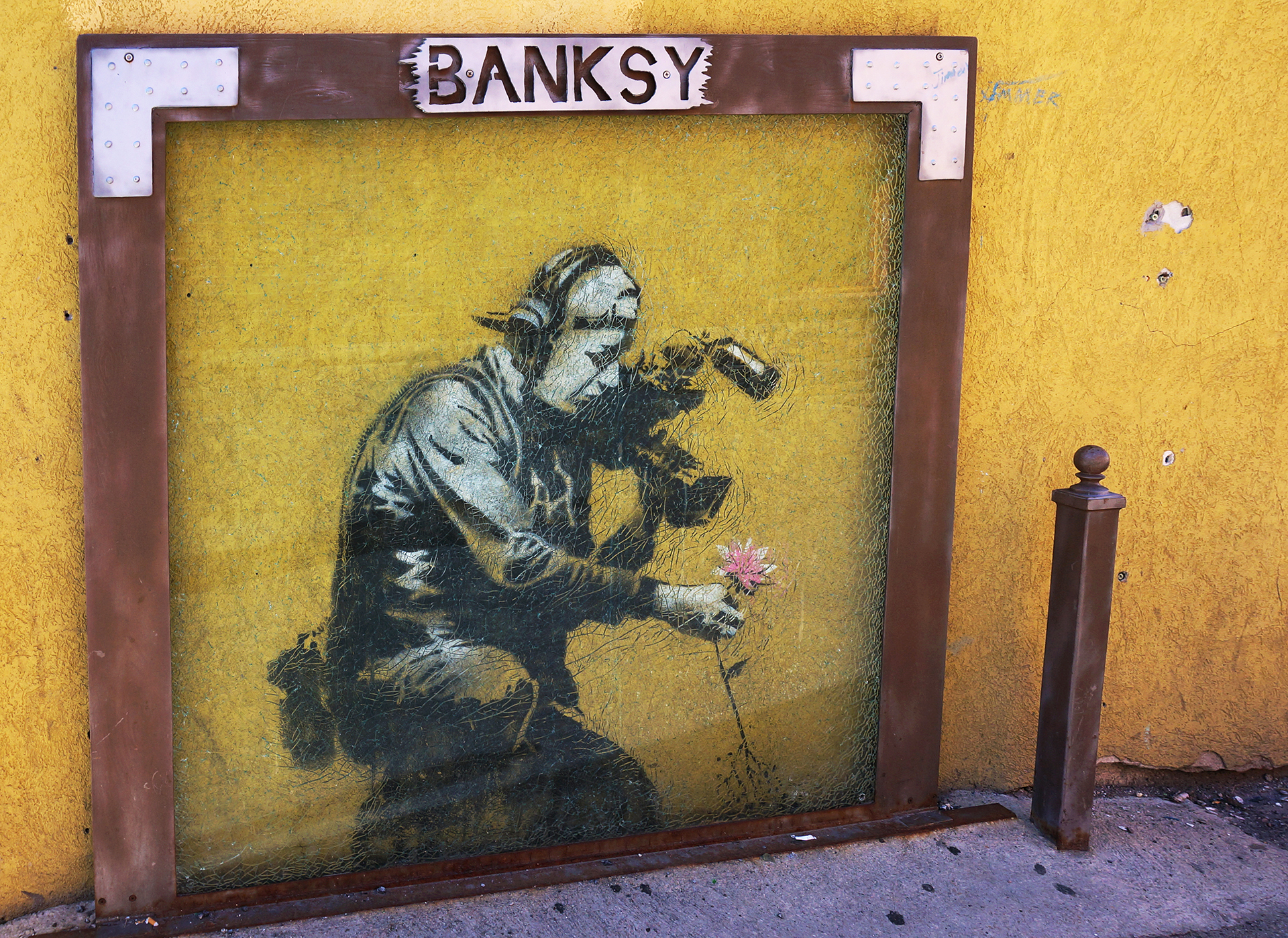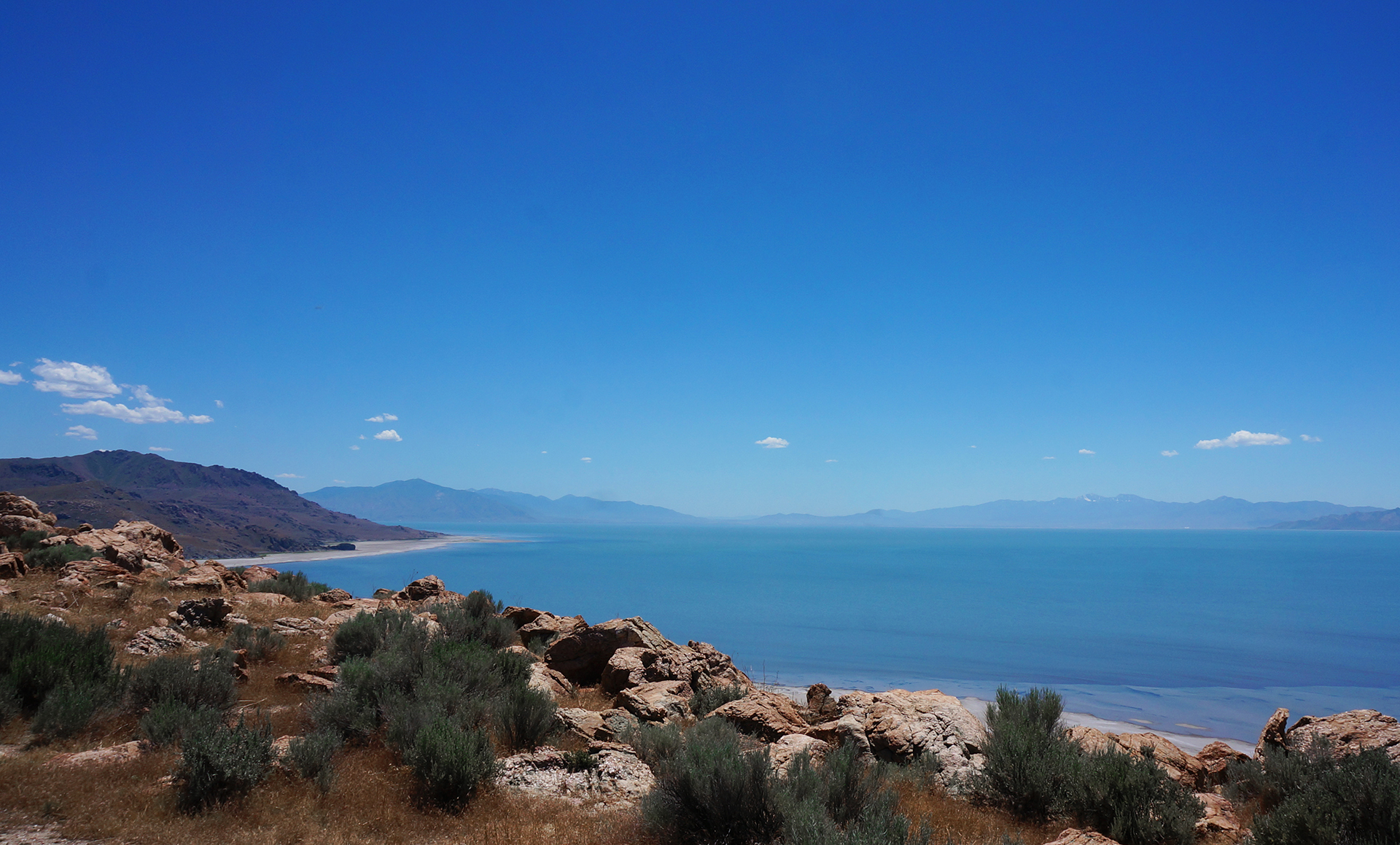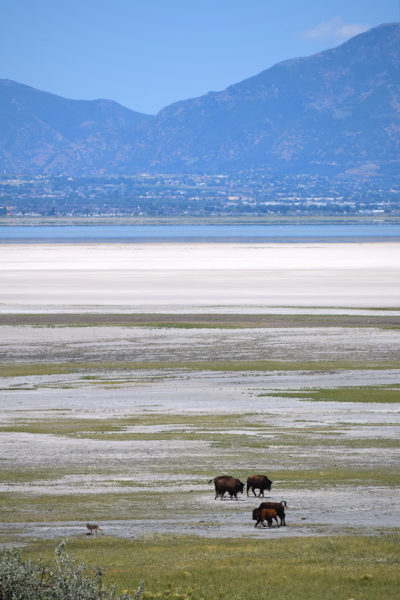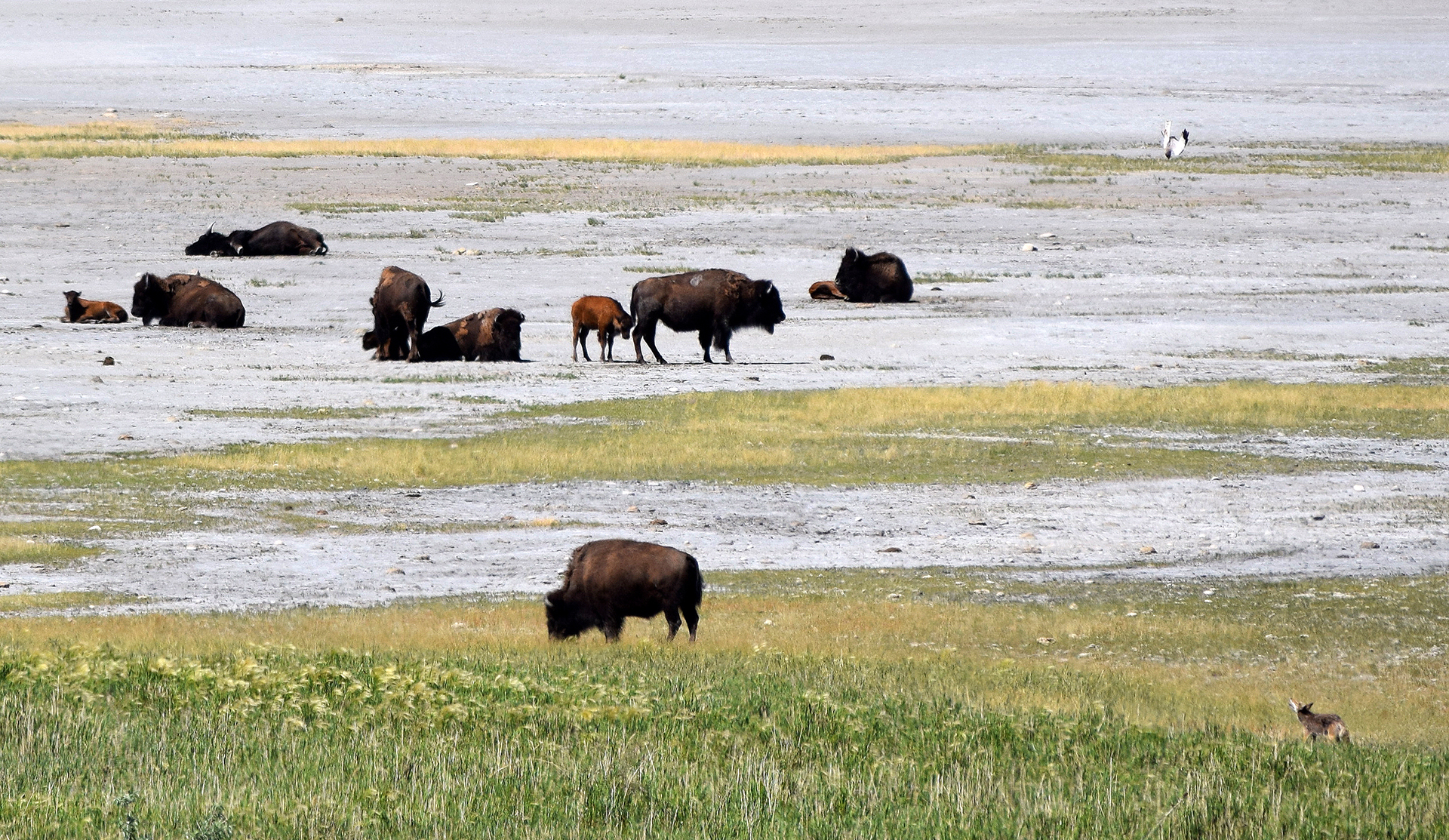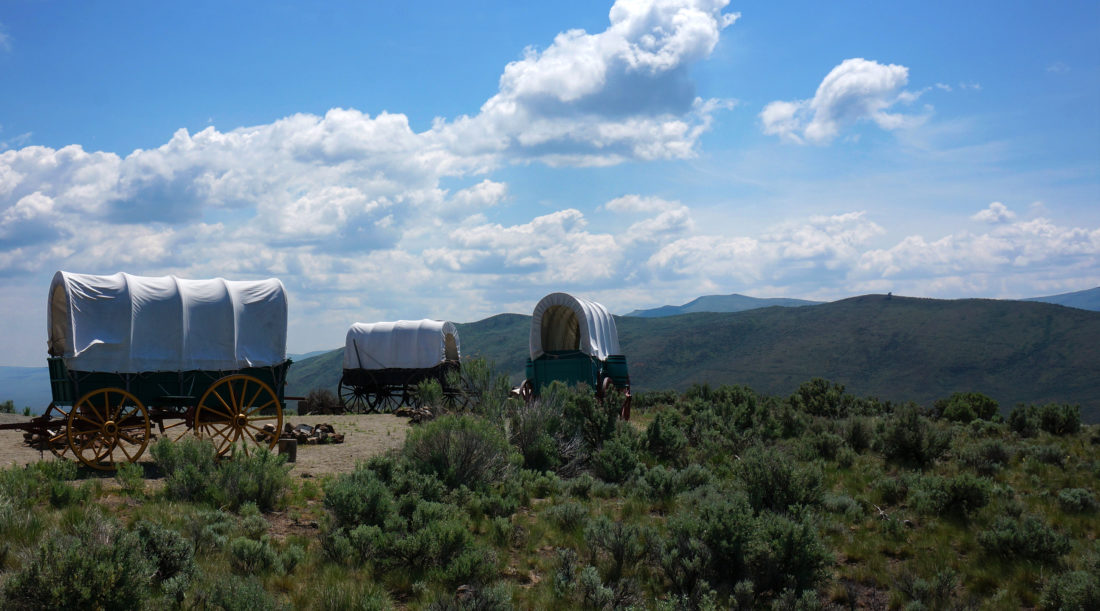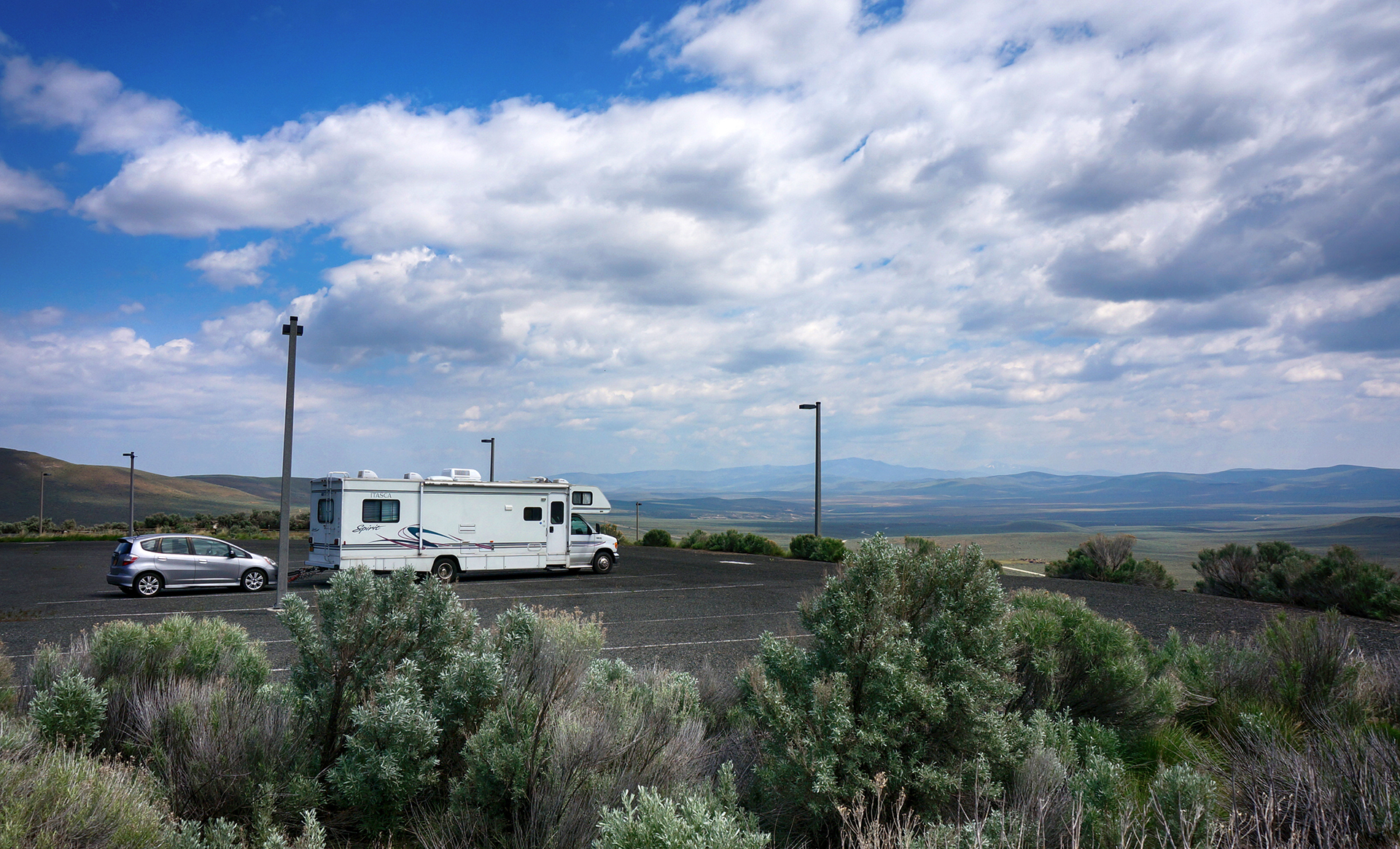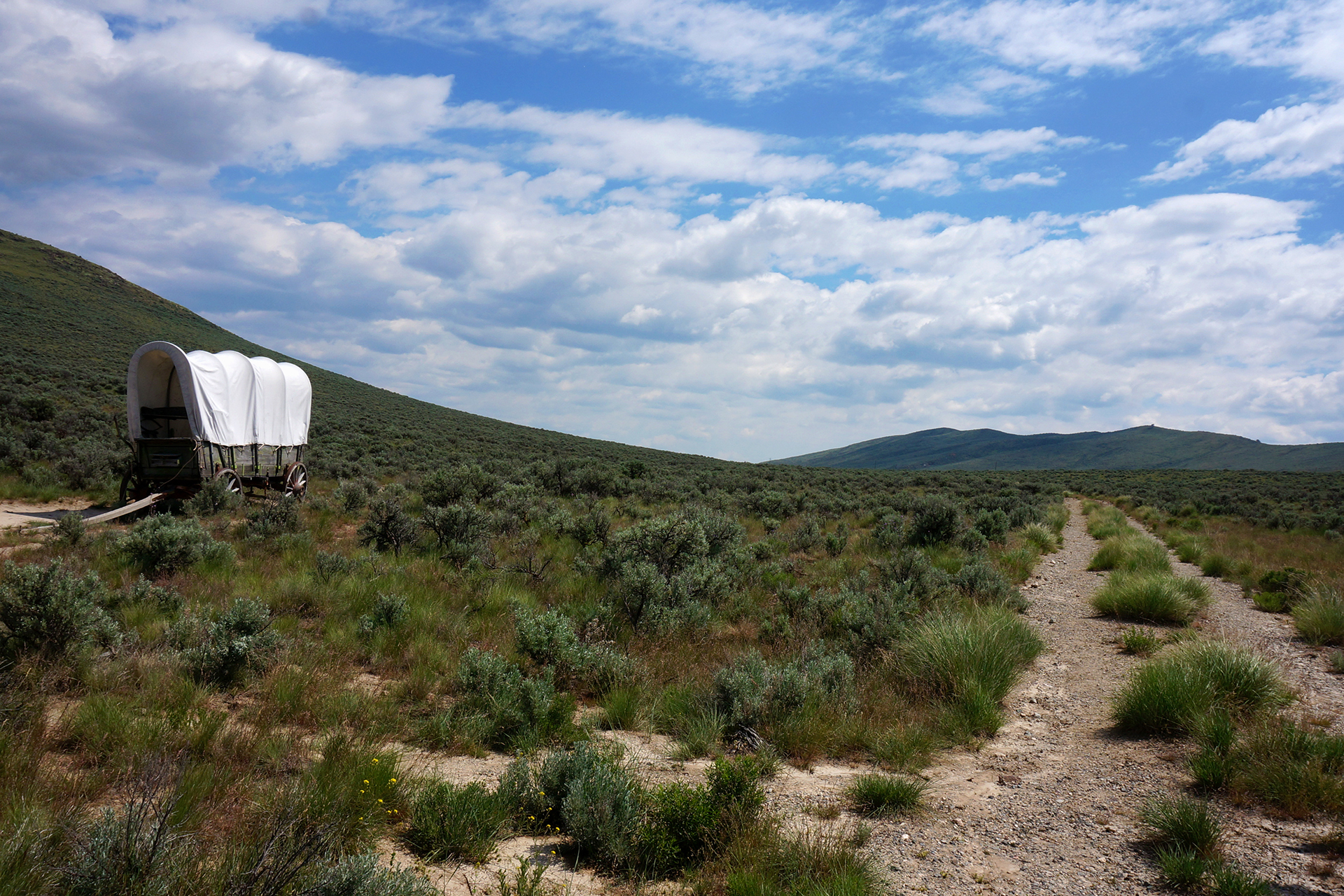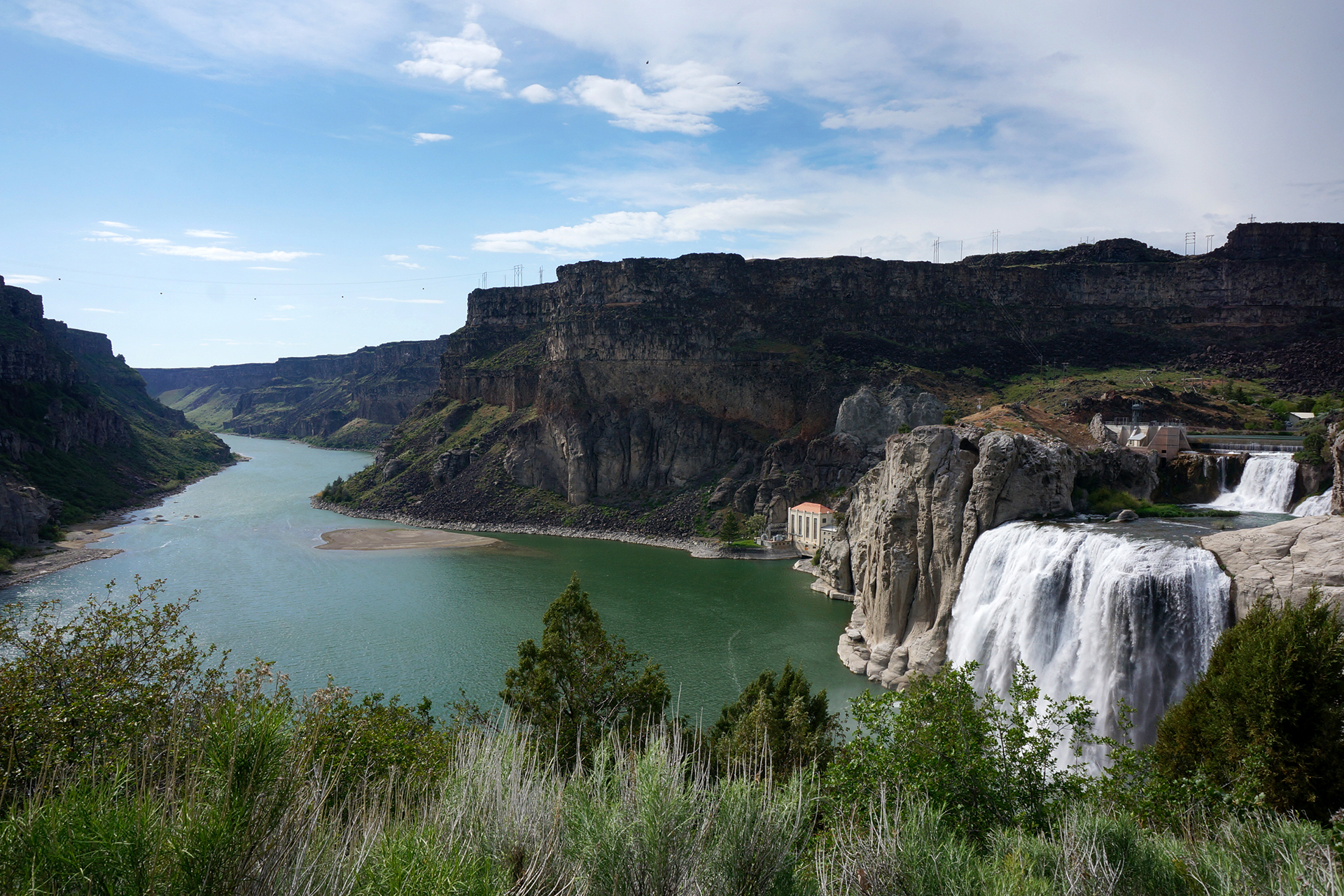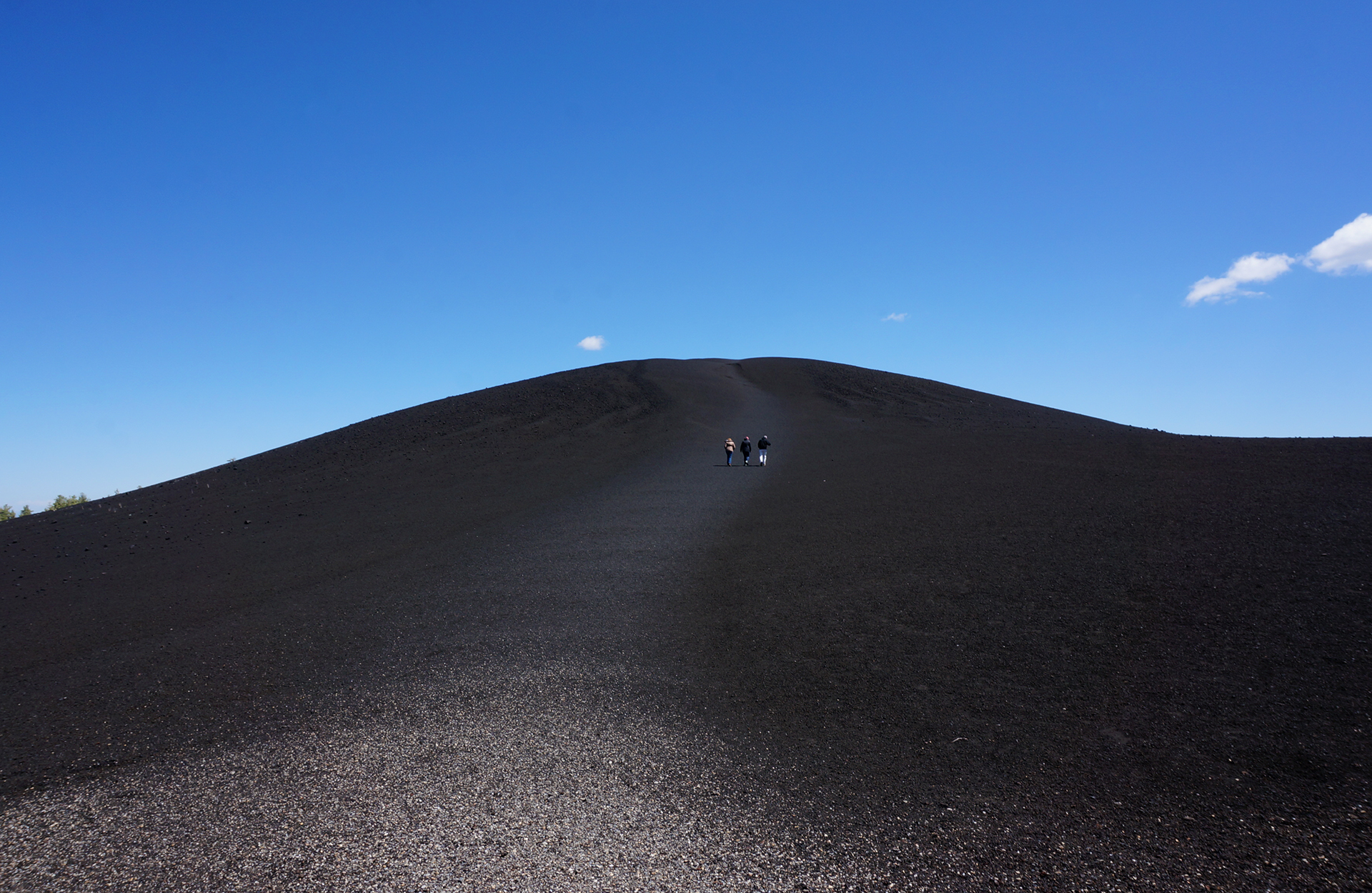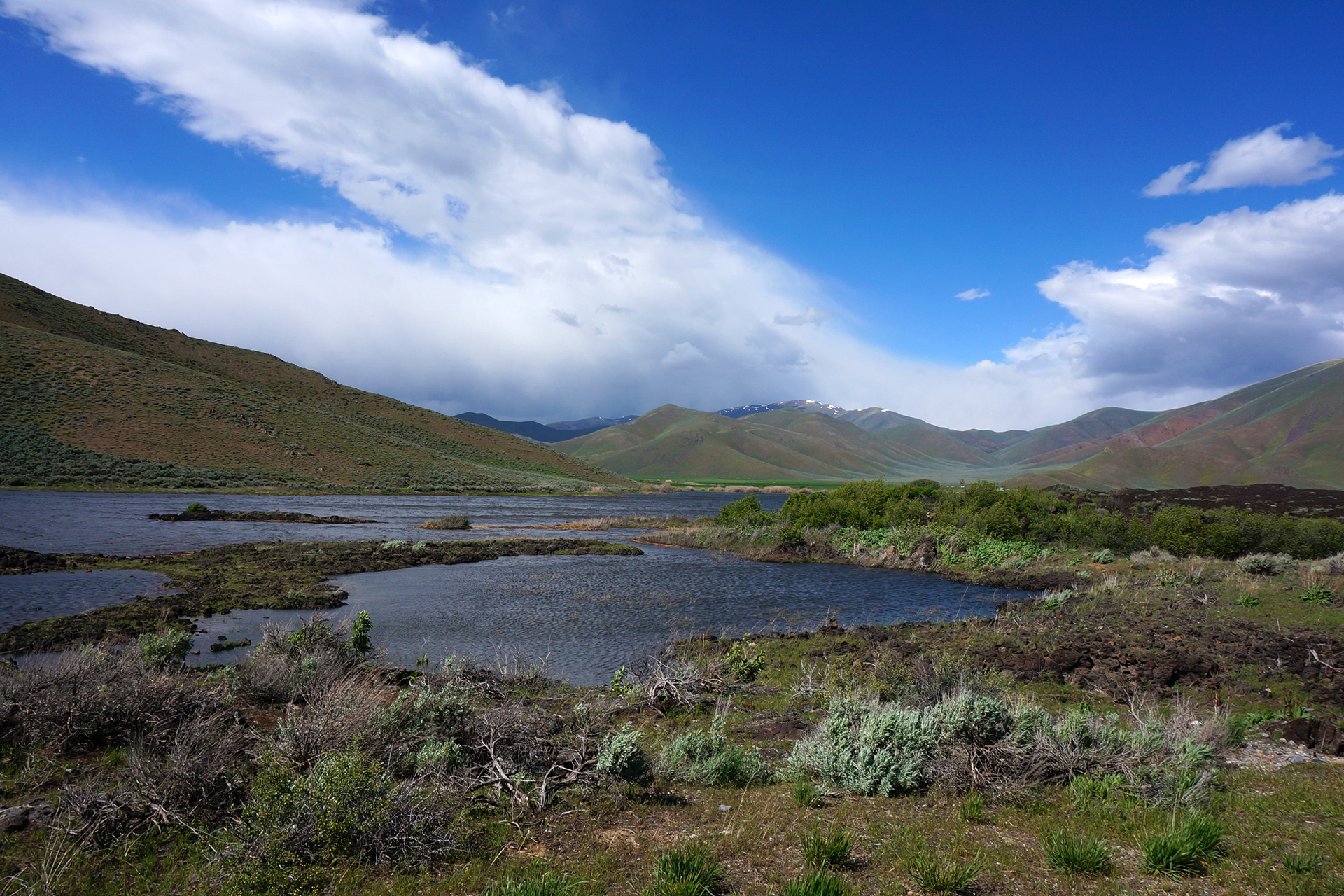Week 48: Bryce Canyon National Park
We stayed for a while (for us) in Kanab, Utah – visiting the Grand Canyon and Zion National Park – but eventually, it was time to move on. Our next destination was Bryce Canyon National Park. It was only about 80 miles away, but it felt like another world.
Hold the Door
Bryce Canyon National Park really is otherworldly, and it was one of our top-3 favorite places from the entire trip. It has some really unusual geology – Bryce Canyon sits at the top of Utah’s “Grand Staircase” of brightly layered rock formations (described in our Zion post). The rock at Bryce is a beautiful pinkish-orange color, and it is very soft, which causes it to weather in a unique way. Essentially, the region’s wild temperature swings cause overnight snows that melt during the day, cutting away a tiny bit of rock each time.
The end result is an eroded rock pillar, narrow and very tall, called a hoodoo (although we usually called them hodors). The astonishing thing is that they form in massive formations as entire sections of mountain are cut away, creating row upon row of pillars. These formations are often mind-bendingly uniform, like soldiers standing at attention.
They are especially pretty when a formation is banded with rock layers.
Although hoodoos can be found in many places in the desert, Bryce Canyon has more hoodoos than anywhere else in the world. In addition, the formation process results in the mountain being carved out into a curved shape, like an amphitheater. The most famous of these is Bryce Amphitheater, where the view from the rim is as cool as the other side of the pillow.
Walkie Talking
Many people just view Bryce Amphitheater and the short scenic drive, but the entire area is amazing. We actually overheard a young man in a gigantic pick-up truck bragging that he was going to see the entire national park in “under twenty minutes.” To each their own – *coughdbagcough* – but personally, we were head over heels for hoodoos, so we took a different approach, hiking everywhere and trying to see everything.
Bryce Canyon is relatively small, so unlike Zion, we were able to do every major hike in just a few days. It is also much, much less crowded than Zion, and venturing down the trails even a quarter-mile often left us in complete solitude. This was national park heaven, and we hiked in quiet amazement for miles past hundreds of fantastic rock formations – not just hoodoos, but rock curtain walls, windows and archways, even something that looked like a sinking ship.
Some of the hikes were tough, but we were basically mountain goats at this point. In fact, the night we got in, we planned to do one short, 3 mile hike, starting around 5:30 p.m. (the best lighting for photos at Bryce is at dawn and dusk). Once we started, though, we couldn’t bear to stop, and we decided to tack on another 5 miles as the sun began to set.
One the one hand, it might not have been the smartest idea to hike 8 miles at sunset in a place known for its freezing temperatures at night. But on the other hand… hoodoos.
Game Changers
The next day, we hiked another 8 miles, this time through the area known as Fairyland. There were a lot of cool sights, but unfortunately Tinkerbell was nowhere to be found. We did have an amusing encounter at the end, however, when Jake spotted a woman with what looked like a large iced coffee and wandered over to ask her where she got it.
“Oh, this isn’t coffee, it’s just soda,” she said, and told us where to find the store. Then, she leaned closer and whispered conspiratorially, “but the soda does have caffeine in it. It’s a game changer!”
Oh, right. We were in Utah, and many Mormons consider caffeine to be forbidden.
“We’ll just keep it between us,” Jake said, and winked.
And then we left to get some god-damned caffeine.
Religious taboos aside, friends, if you ever come to Bryce Canyon (and you should try), please, please, please try a hike down among the hoodoos. The views from the top are great, but once you get down to the hoodoos’ level, you realize how incredible they really are.
Plus, you never know when you might encounter two other tourists attempting to cram themselves into a single rock window for a photo.
You might even get to take a picture of them while pretending not to notice.
Gnarls Barkley
Aside from the hoodoos and the generally beautiful landscape, there is one more awesome thing about Bryce Canyon. It contains a few bristlecone pines, one of the world’s longest-lived trees. They are quite rare, and we attempted to see some (without success) at Great Basin National Park. The only place we actually saw any bristlecone pines was at Bryce. While the Great Basin pines can be up to 5,000 years old, these are only (!) about 1,800 years old.
Stunted, twisted, and with weird bottle-brush needles, they are… not the world’s best-looking tree. To be fair, we’d all probably look a bit worse for wear if we were nearing the end of our second millennia.
Notes from Bryce Canyon City
We didn’t realize it at first, but Bryce Canyon is very high – the elevation is over 7,500 feet. The days were sunny and warm, but true to form, it snowed every night. After spending an entire winter above freezing, we had to get out our winter hat and gloves. In late May.
The owners of the combination campground / gas station we were staying at also own a restaurant, and based on internet reviews, we stopped for some pie. At first, we were distracted by the fact that every worker at the busy restaurant appeared to be directly related. Then we tried the pies, and we have to say: they really were incredible! Some of the best we’ve ever had. They really put the ho-made pies at the Thunderbird to shame.
As a final note, the town of Bryce Canyon City itself was only incorporated in 2007, and the population is only 198 people, making it possibly the smallest town we ever stayed in.
But it does have an airport…



